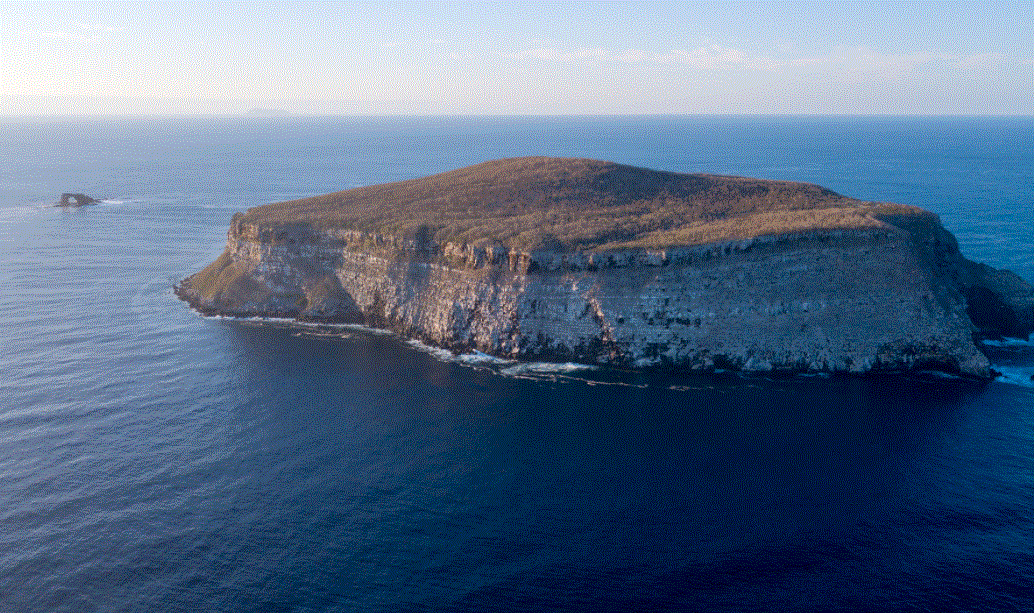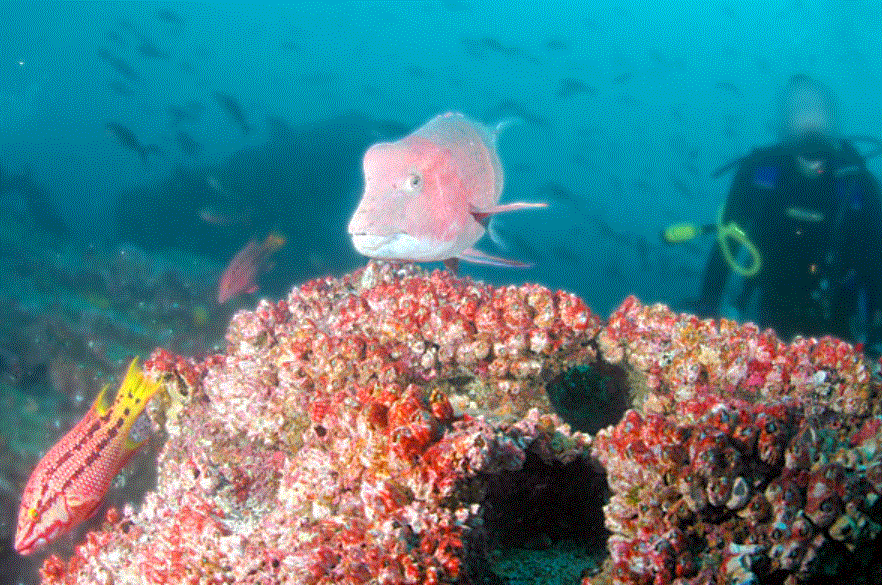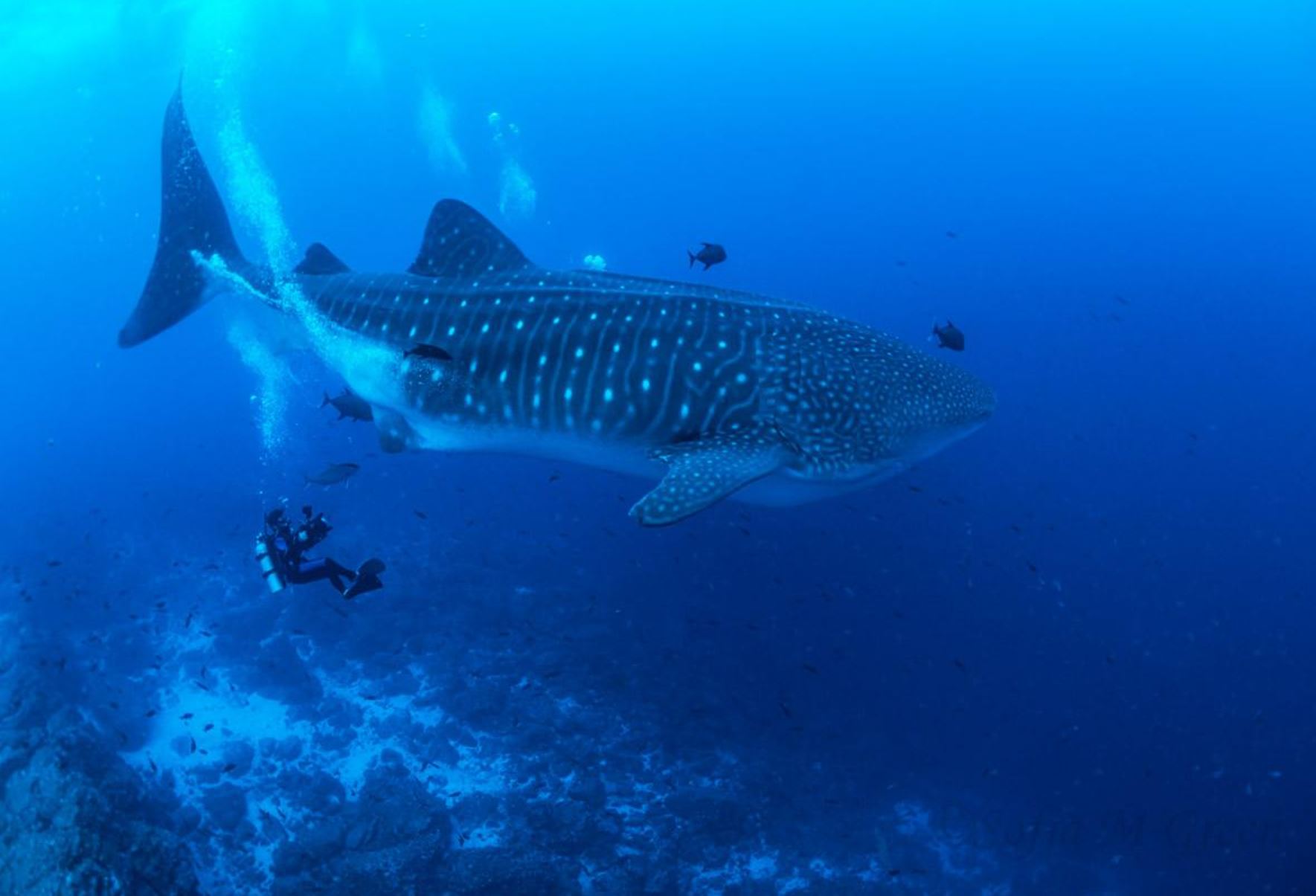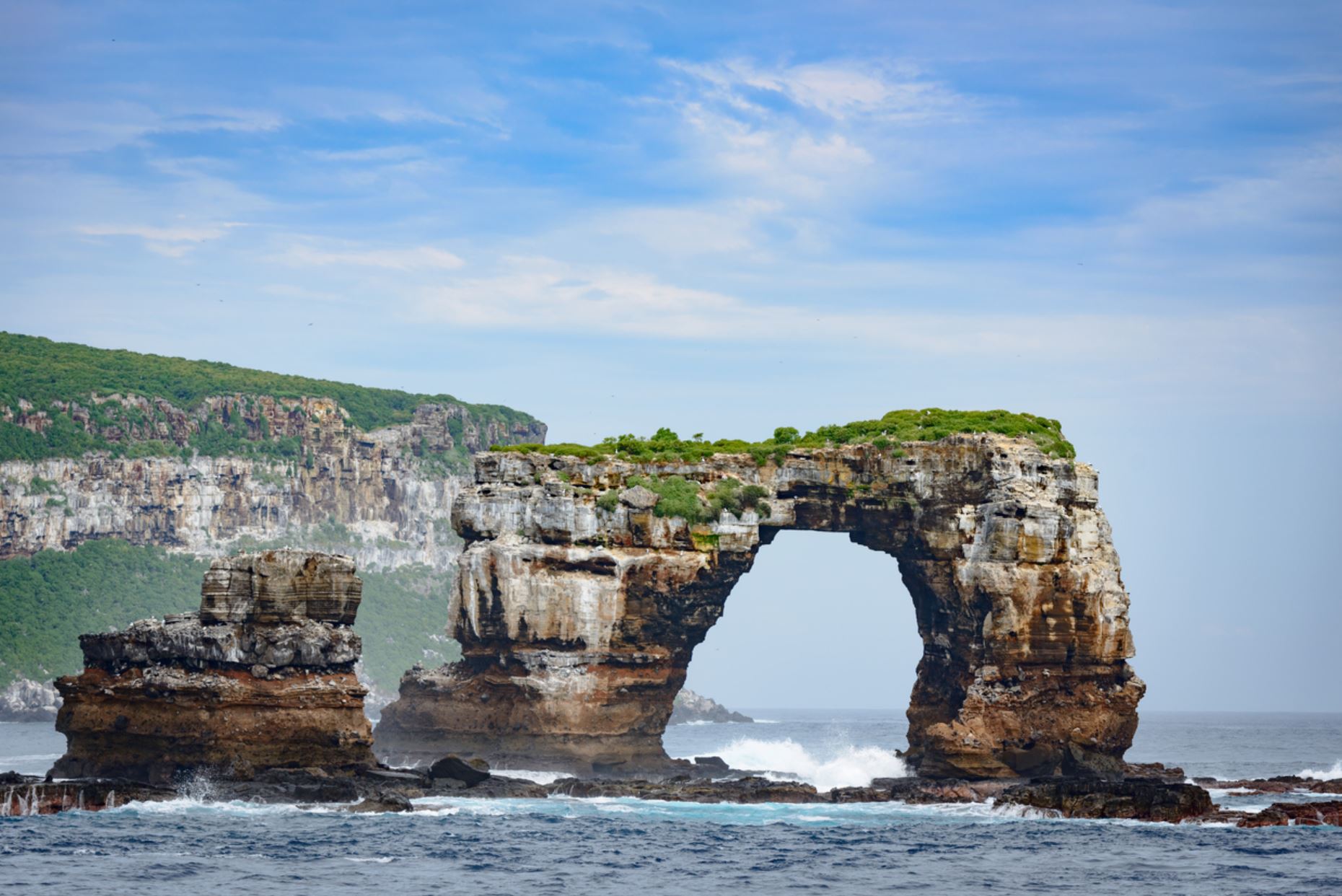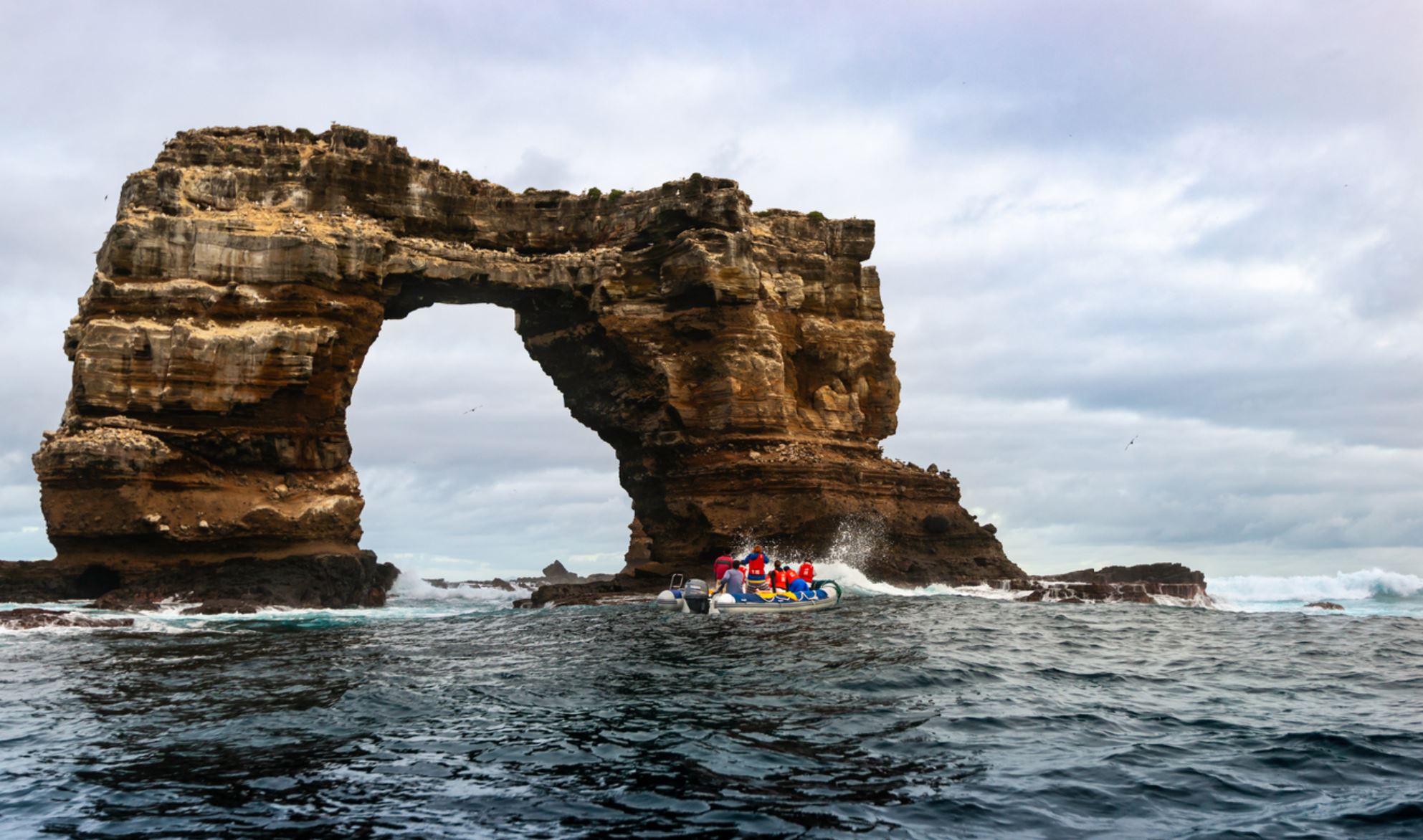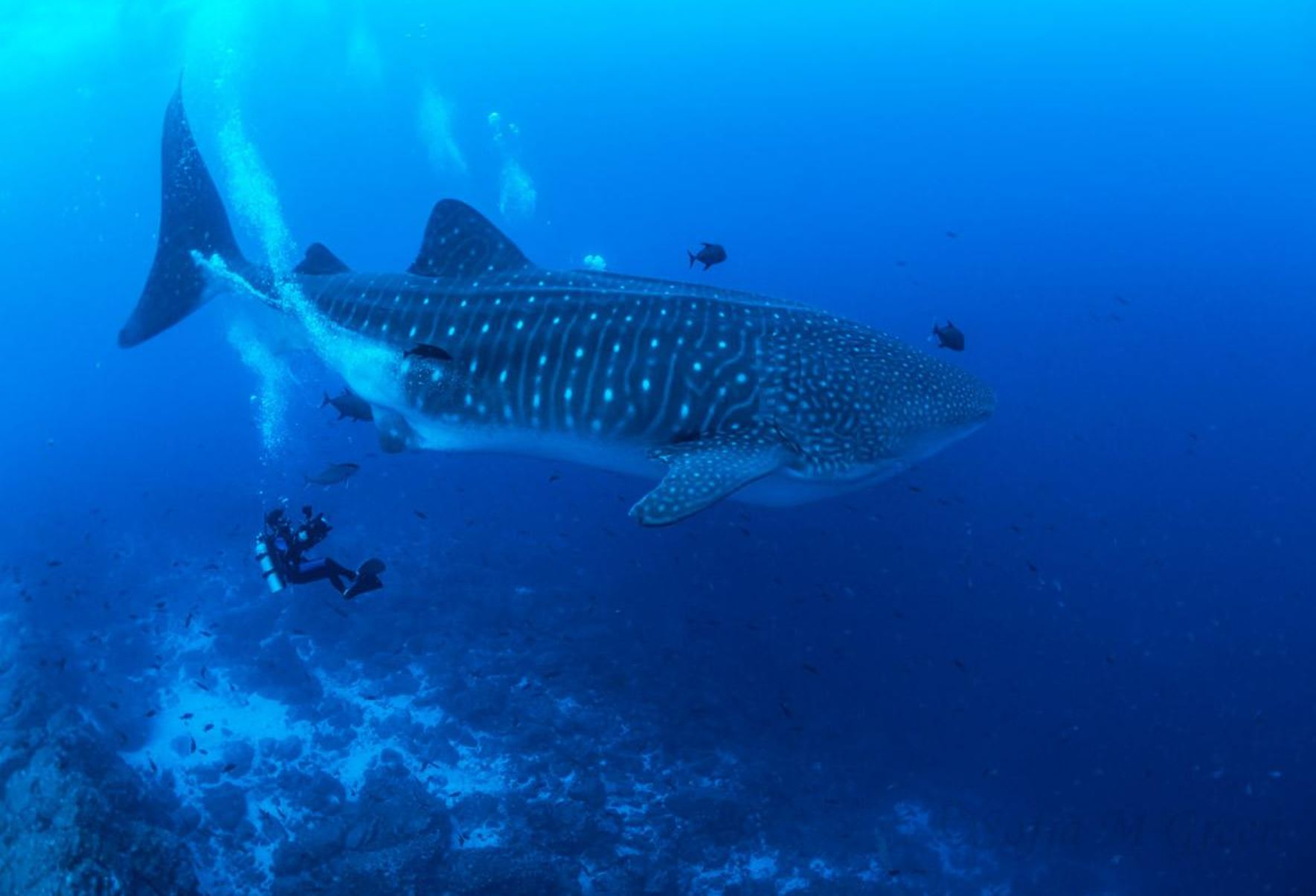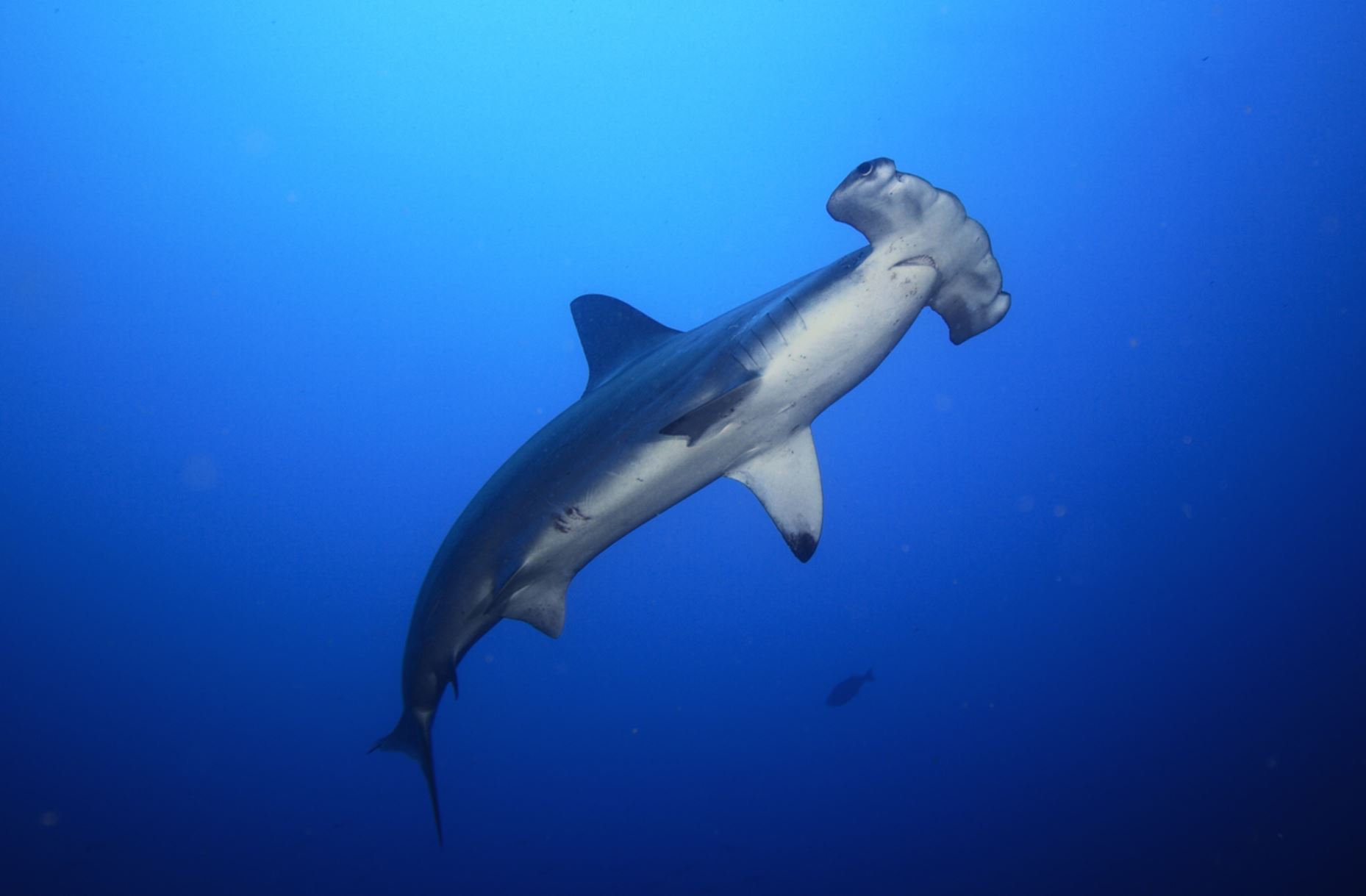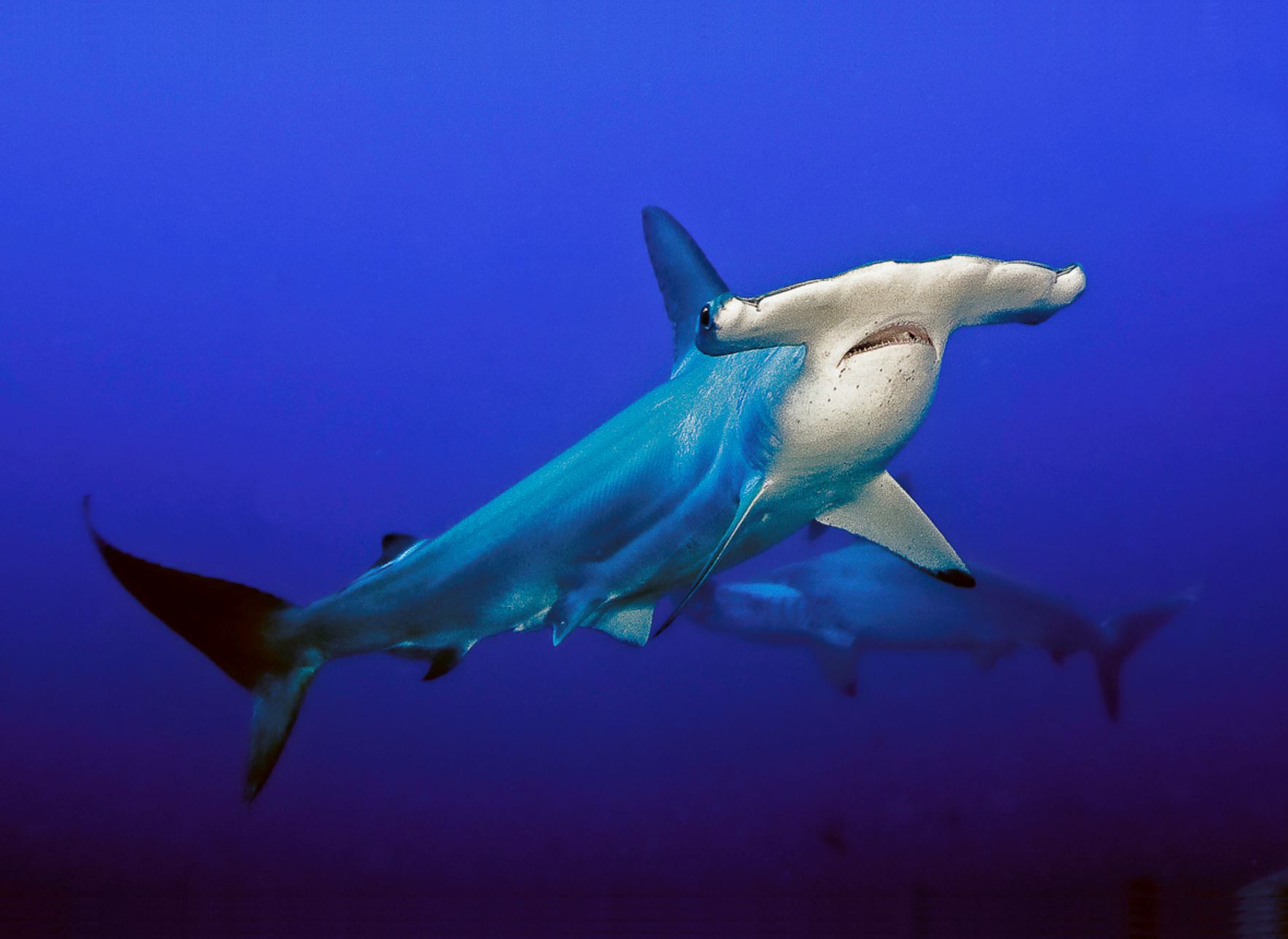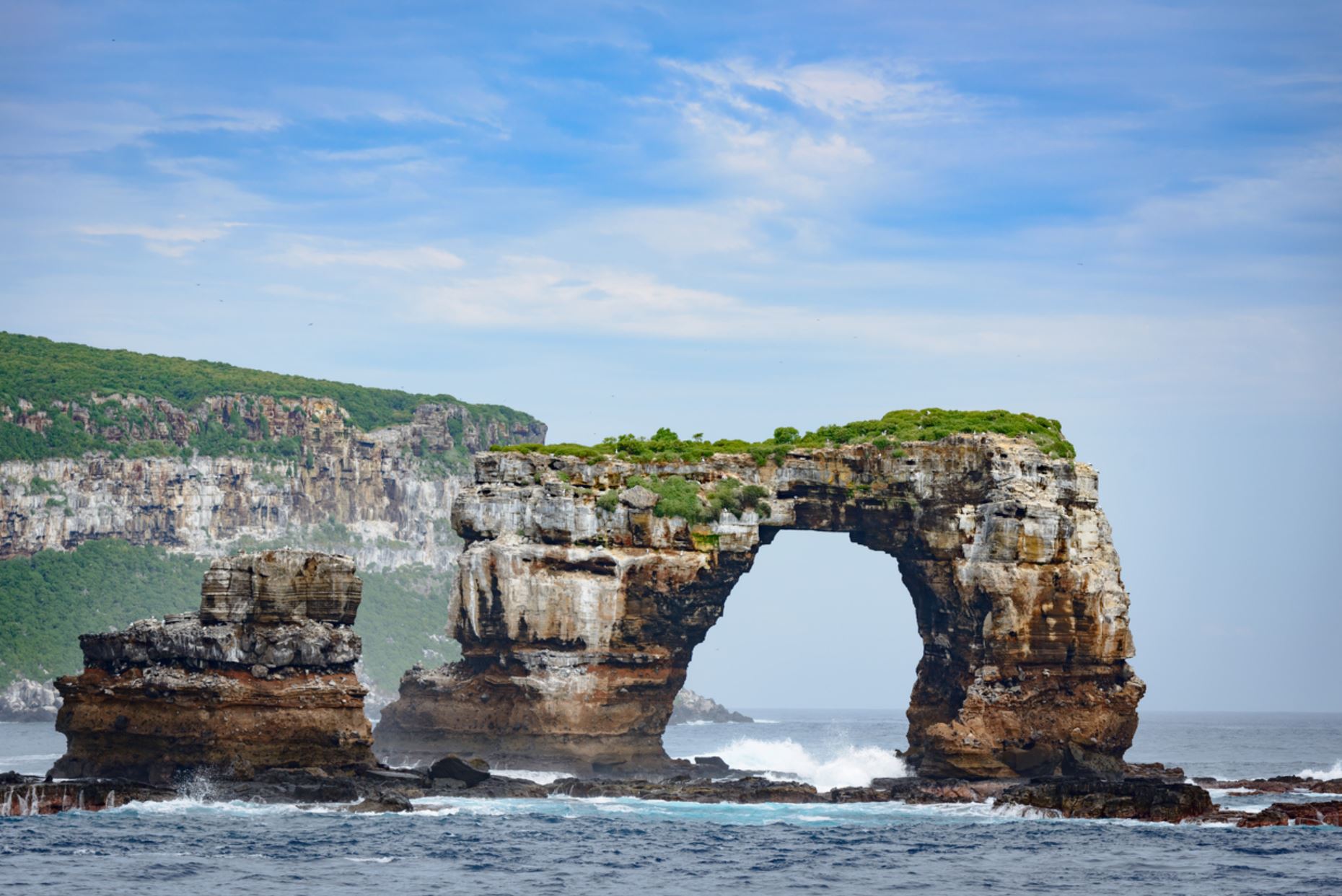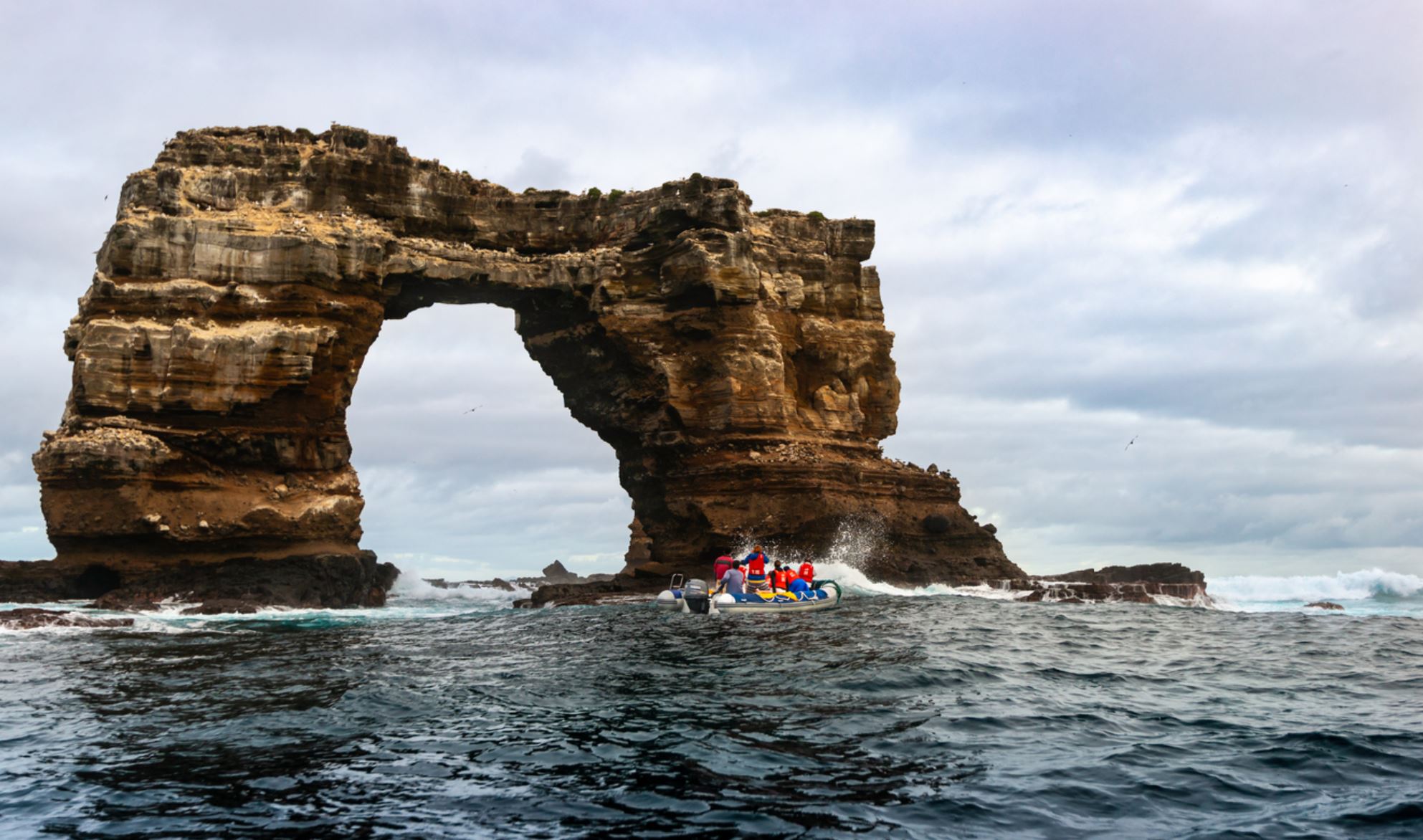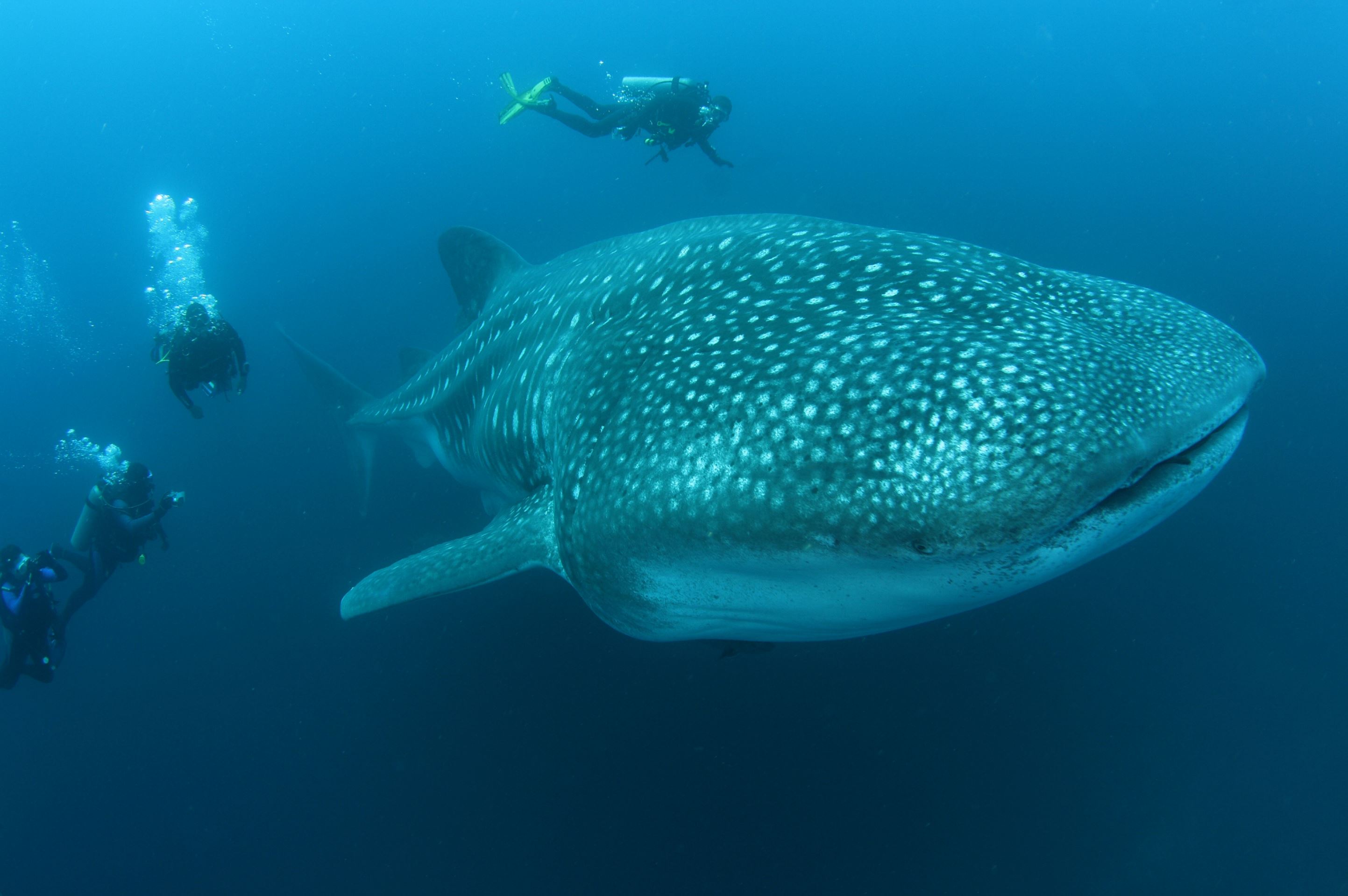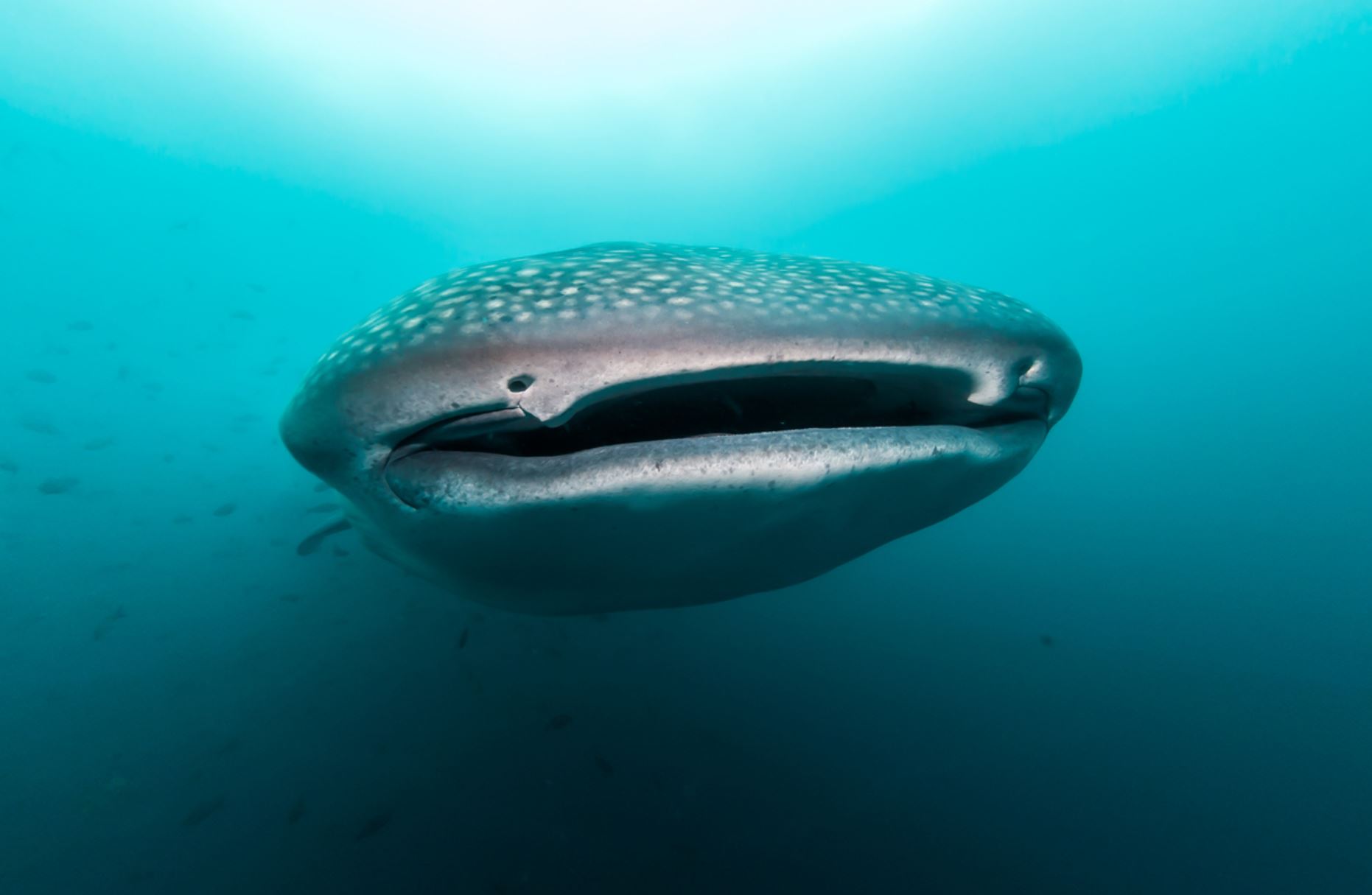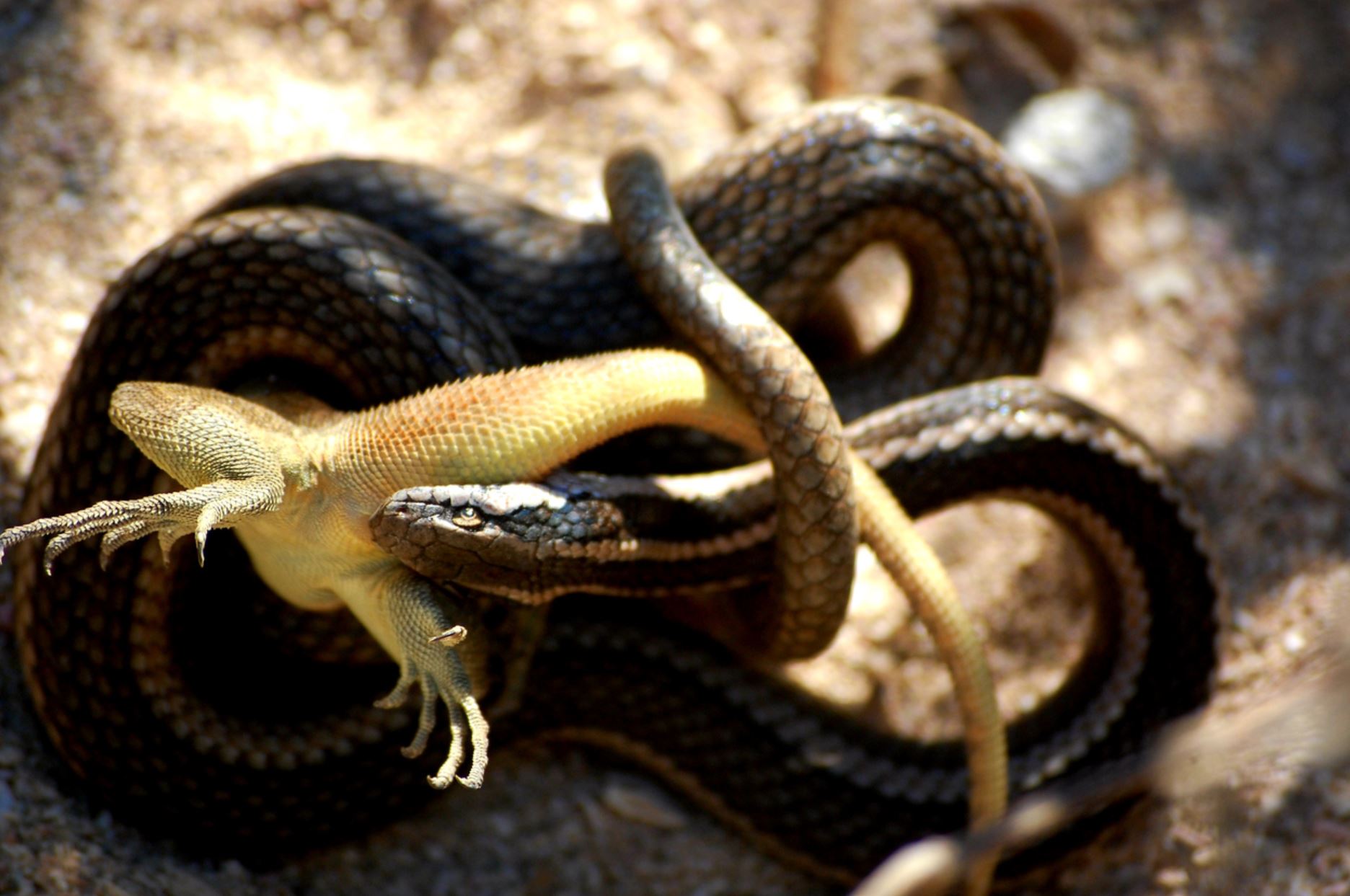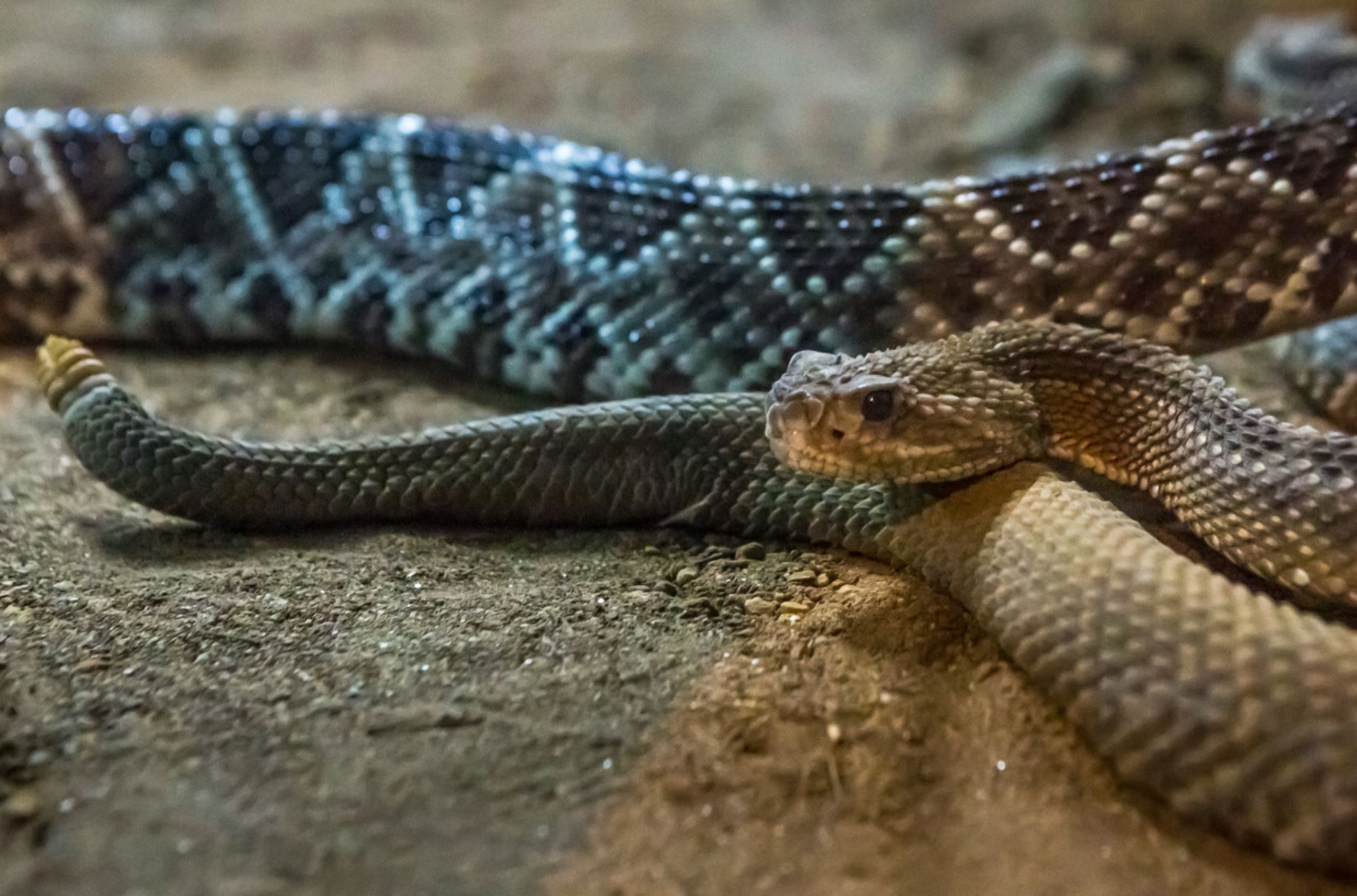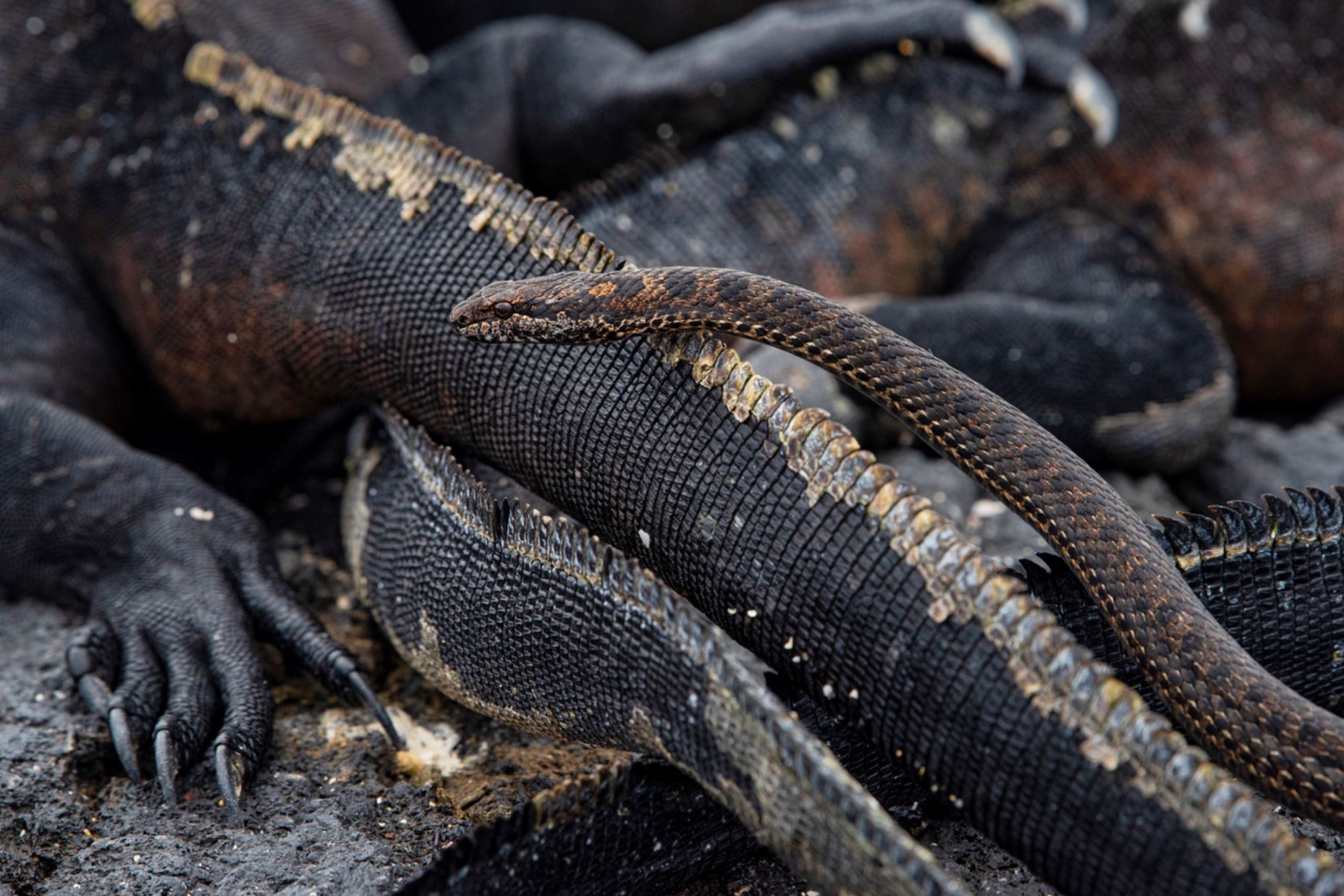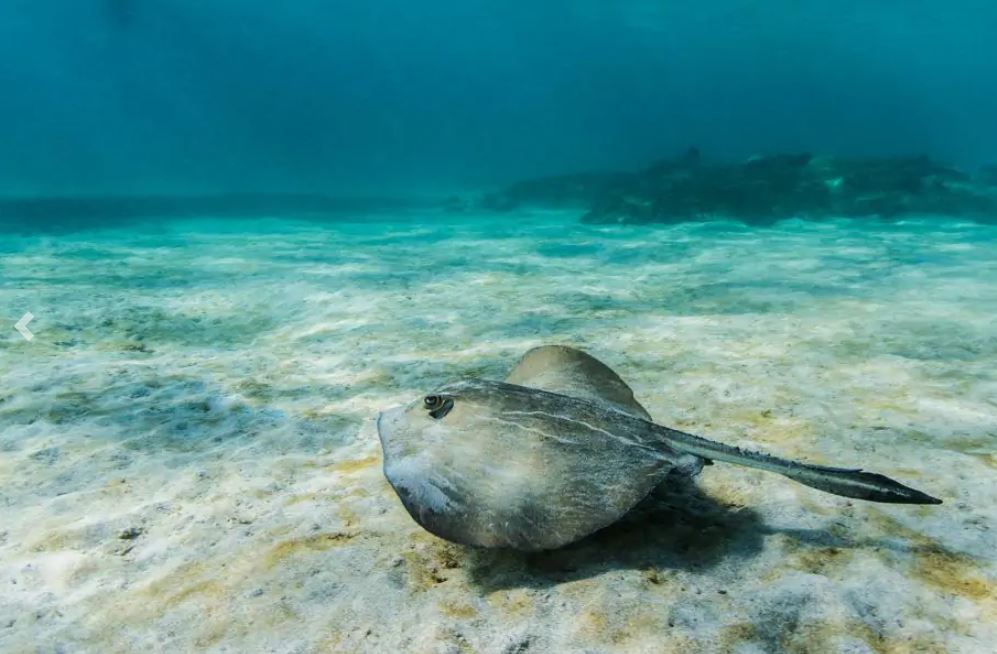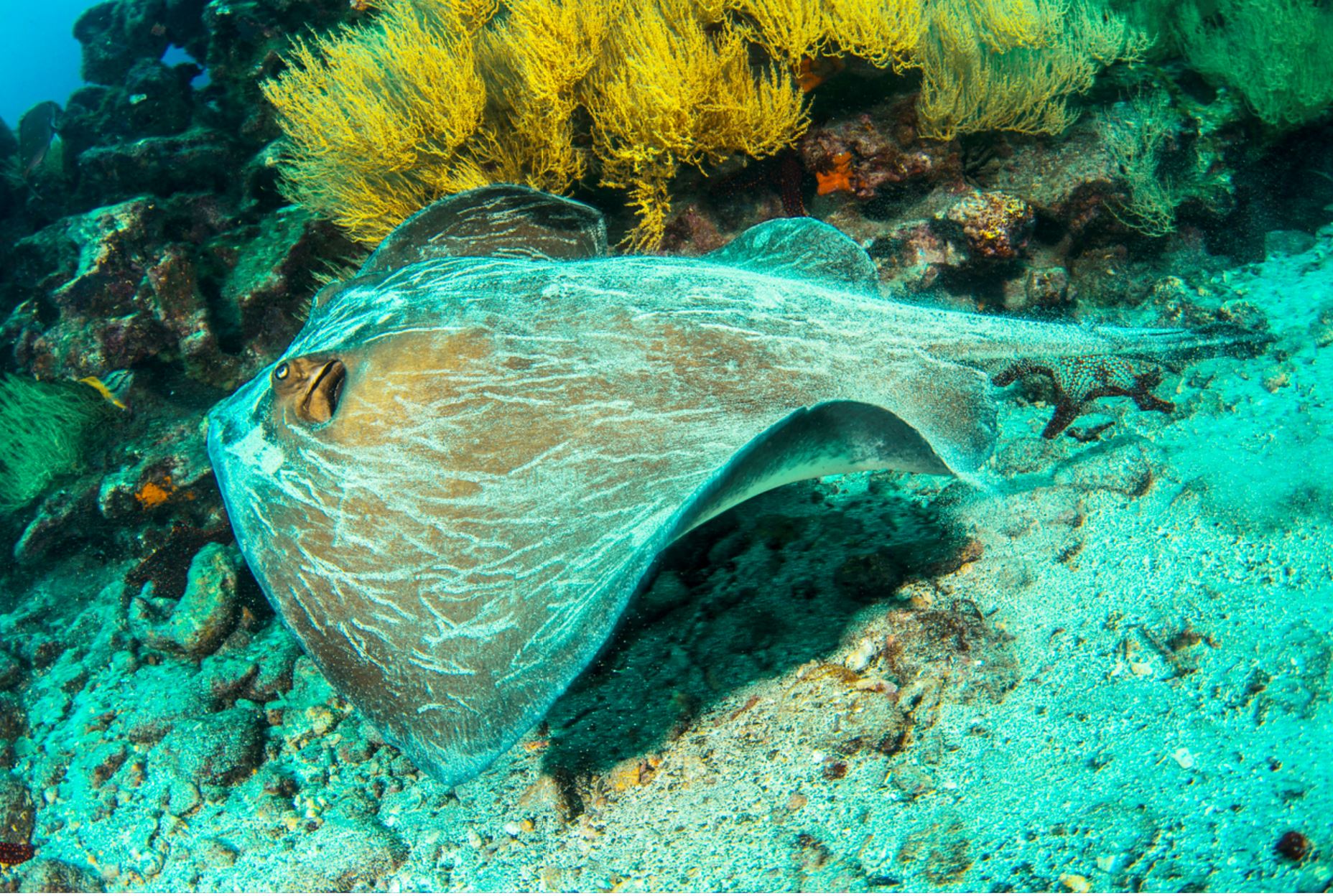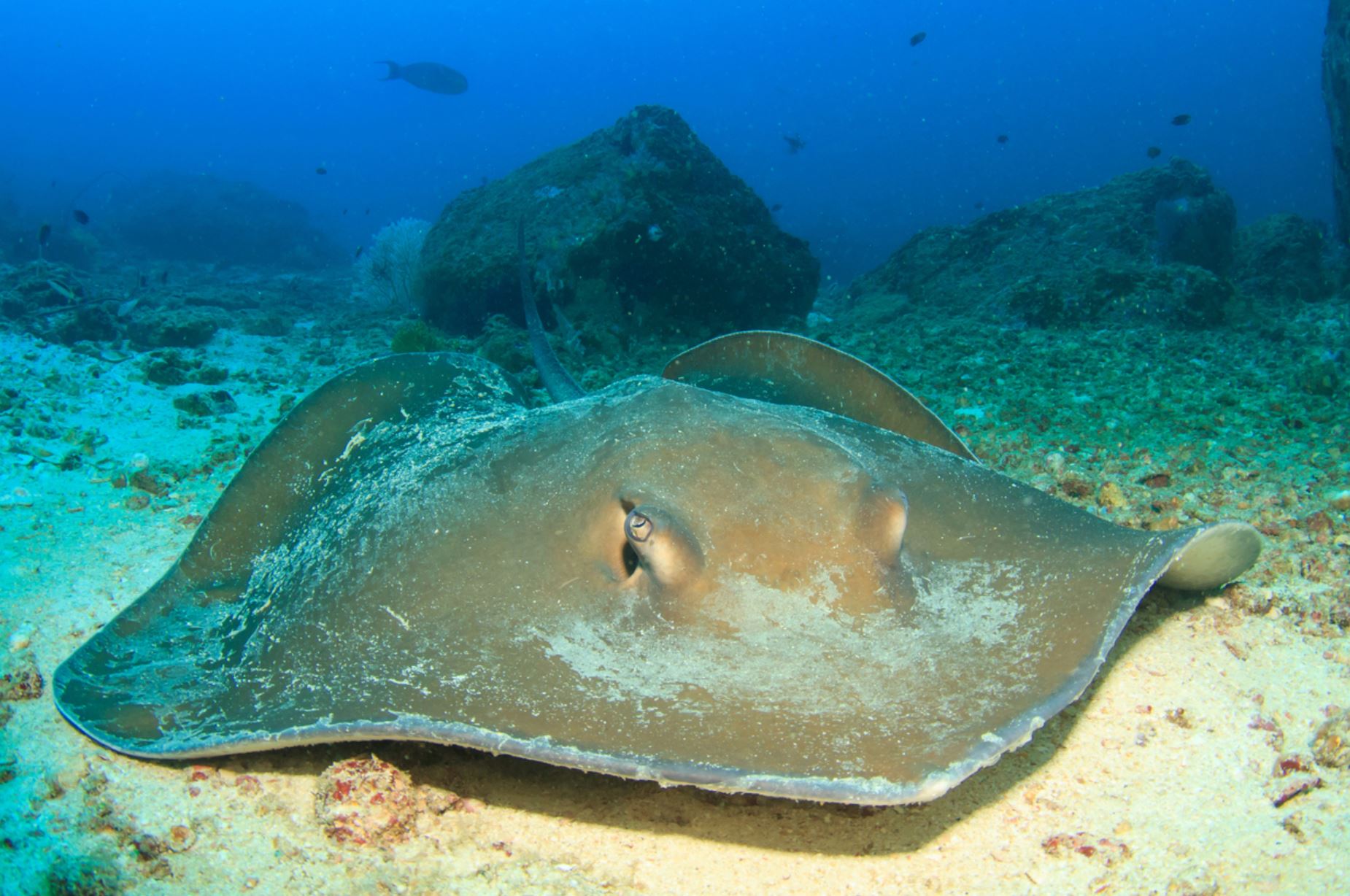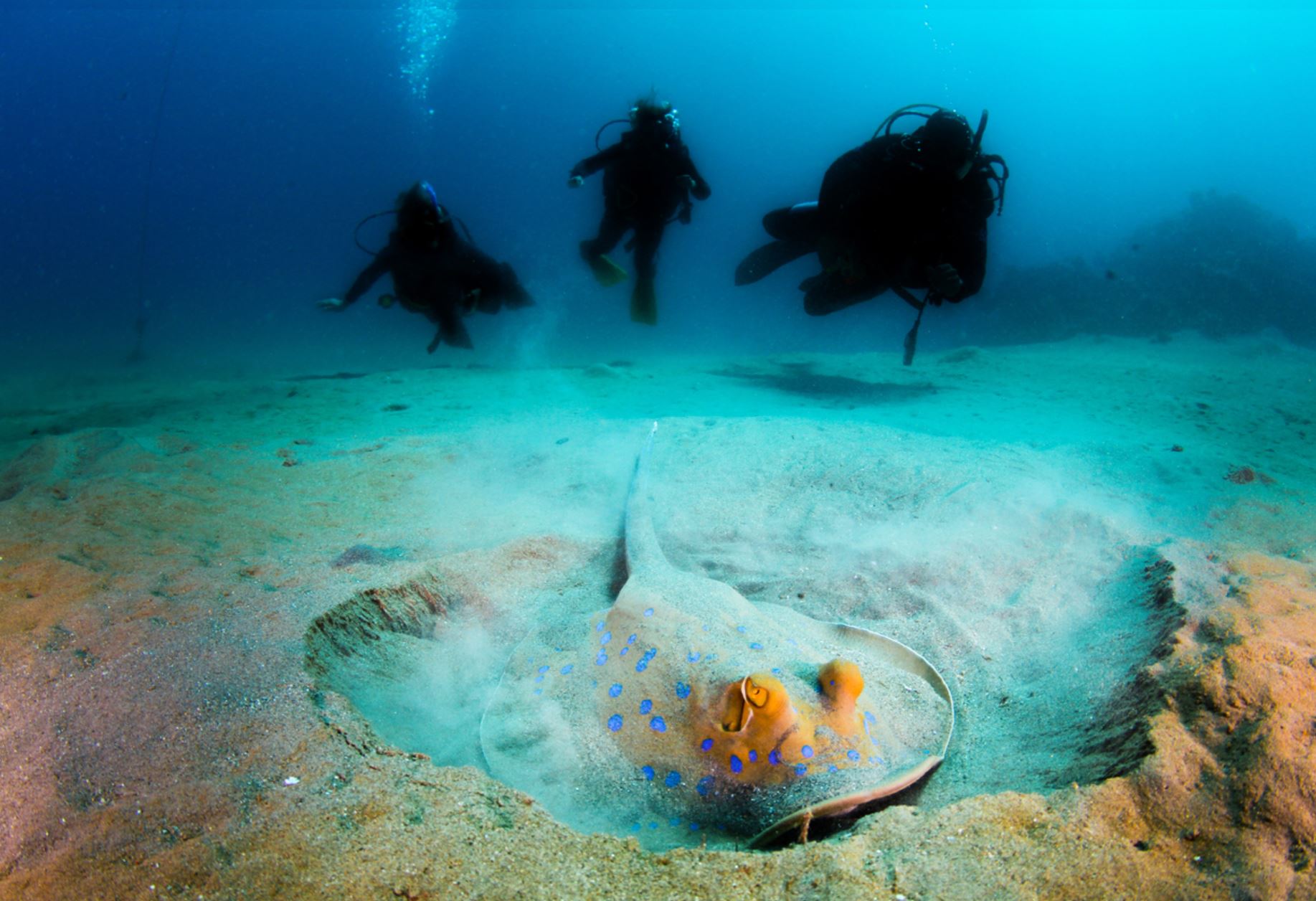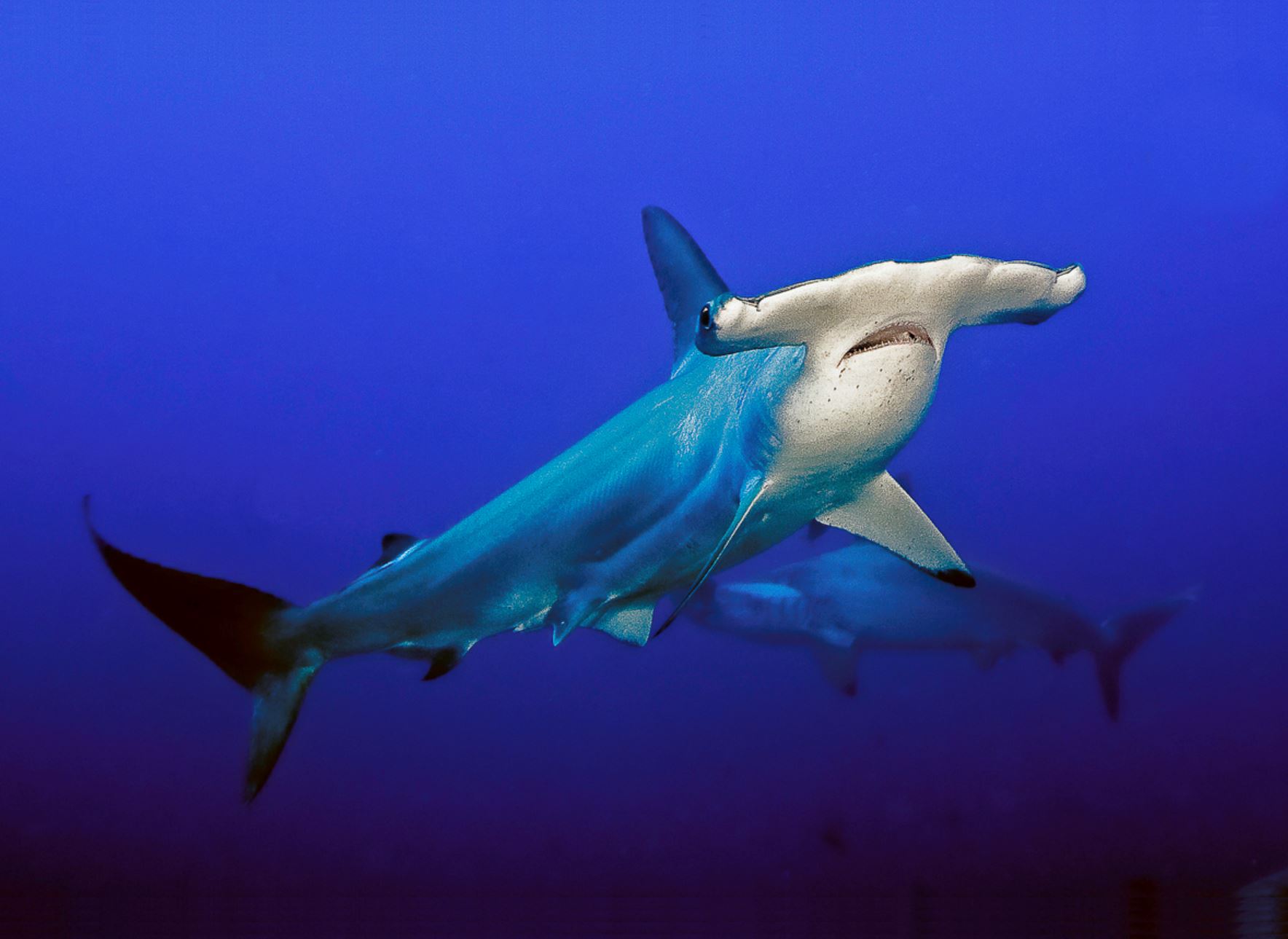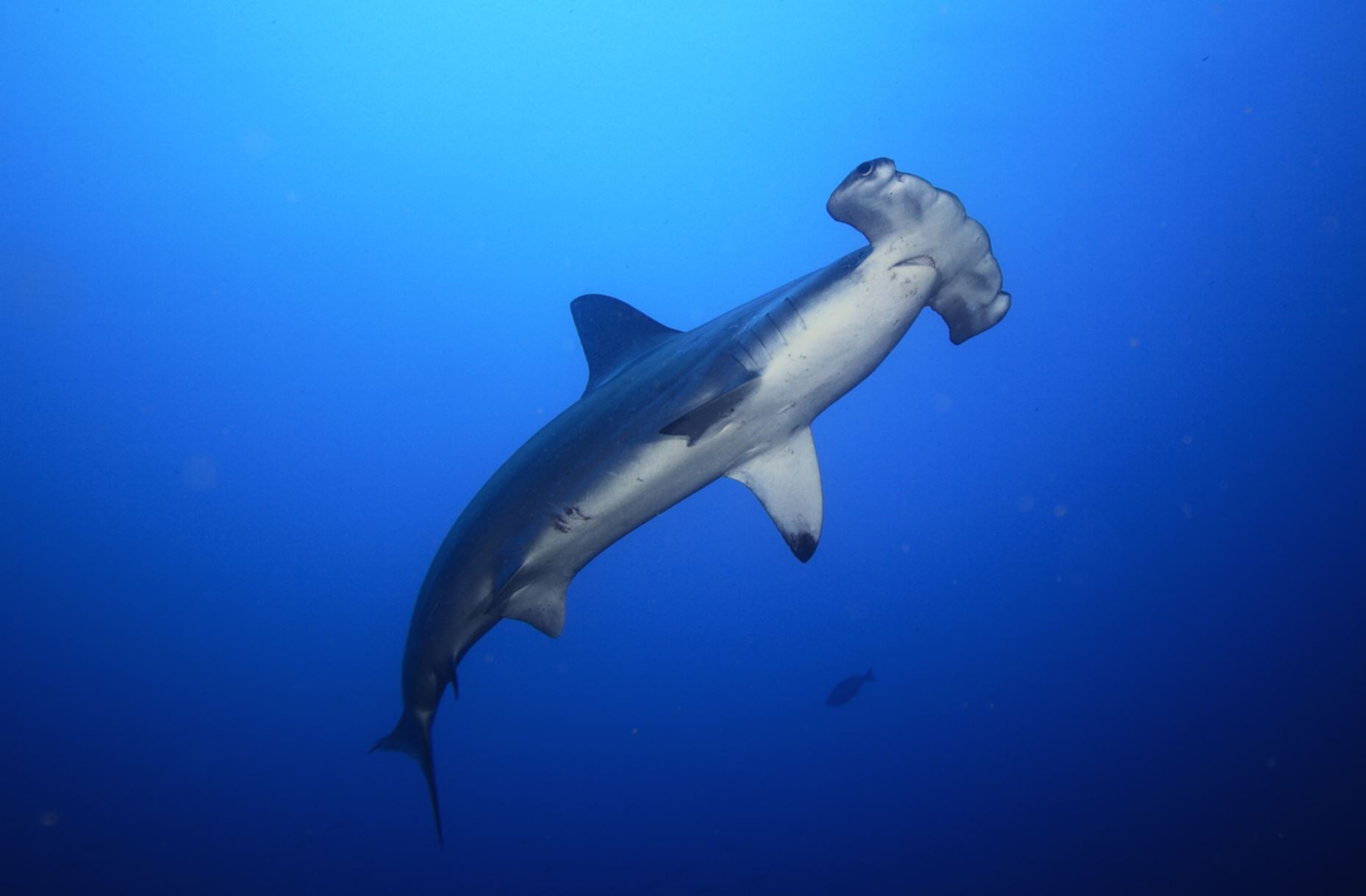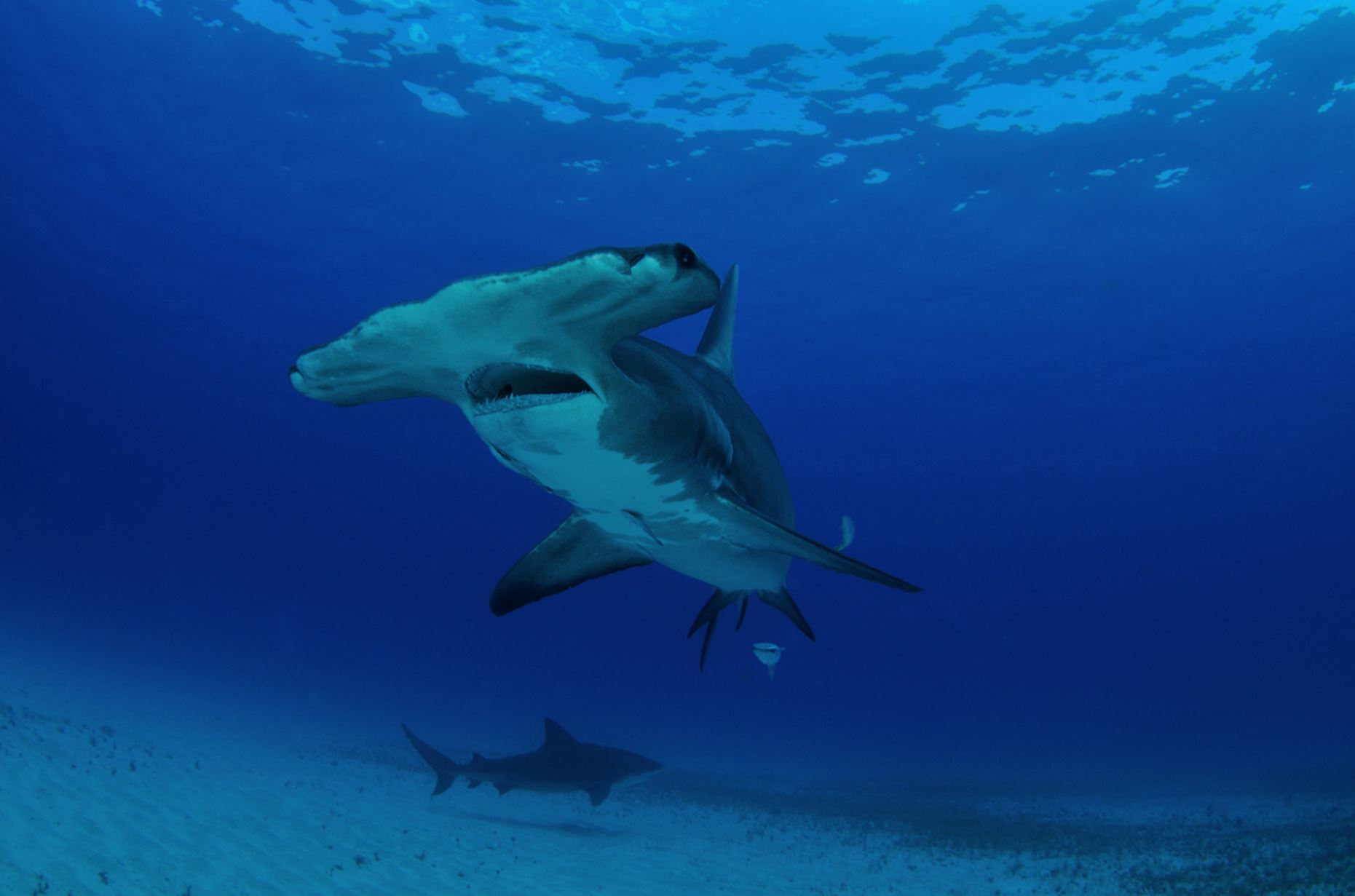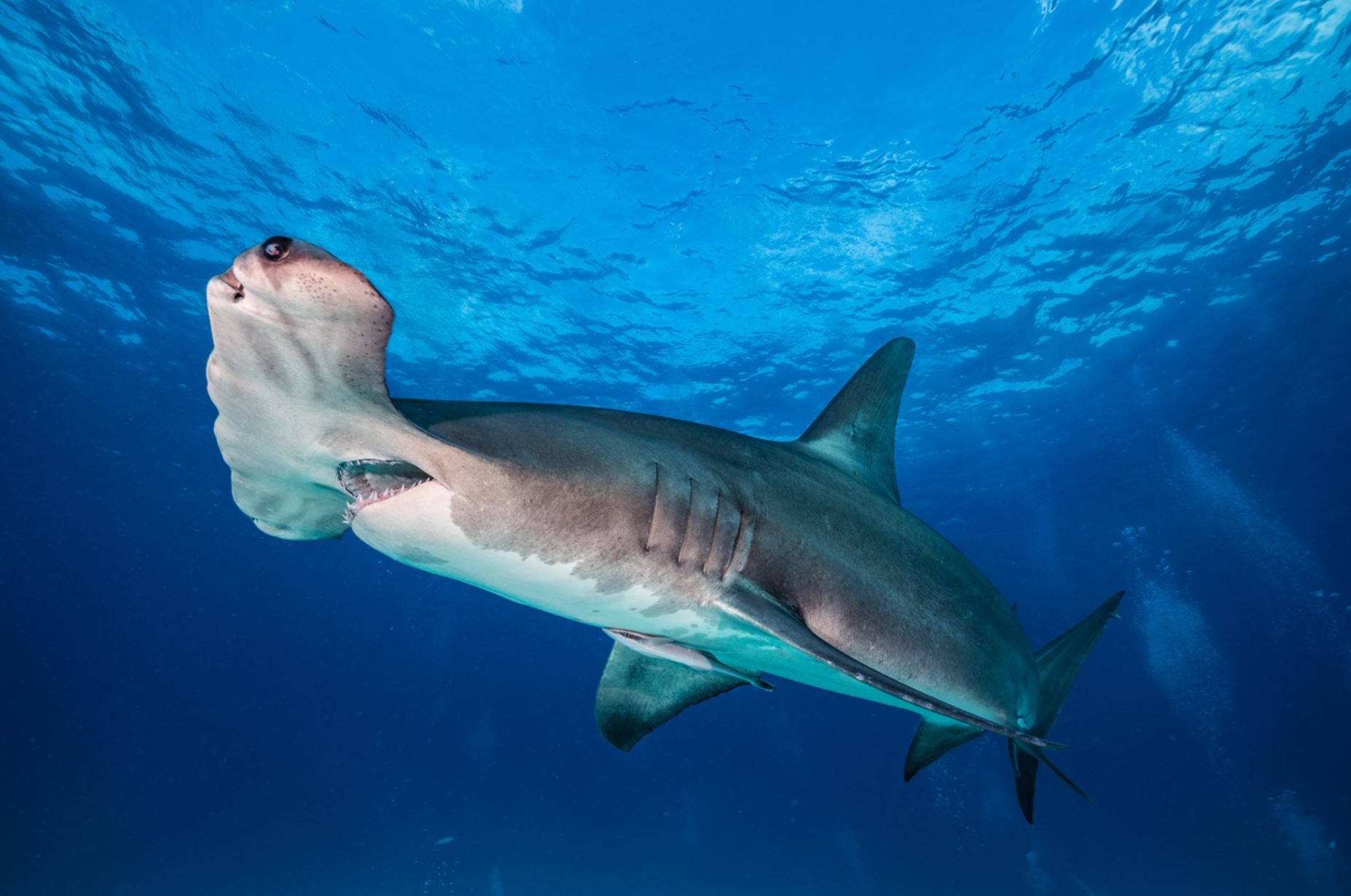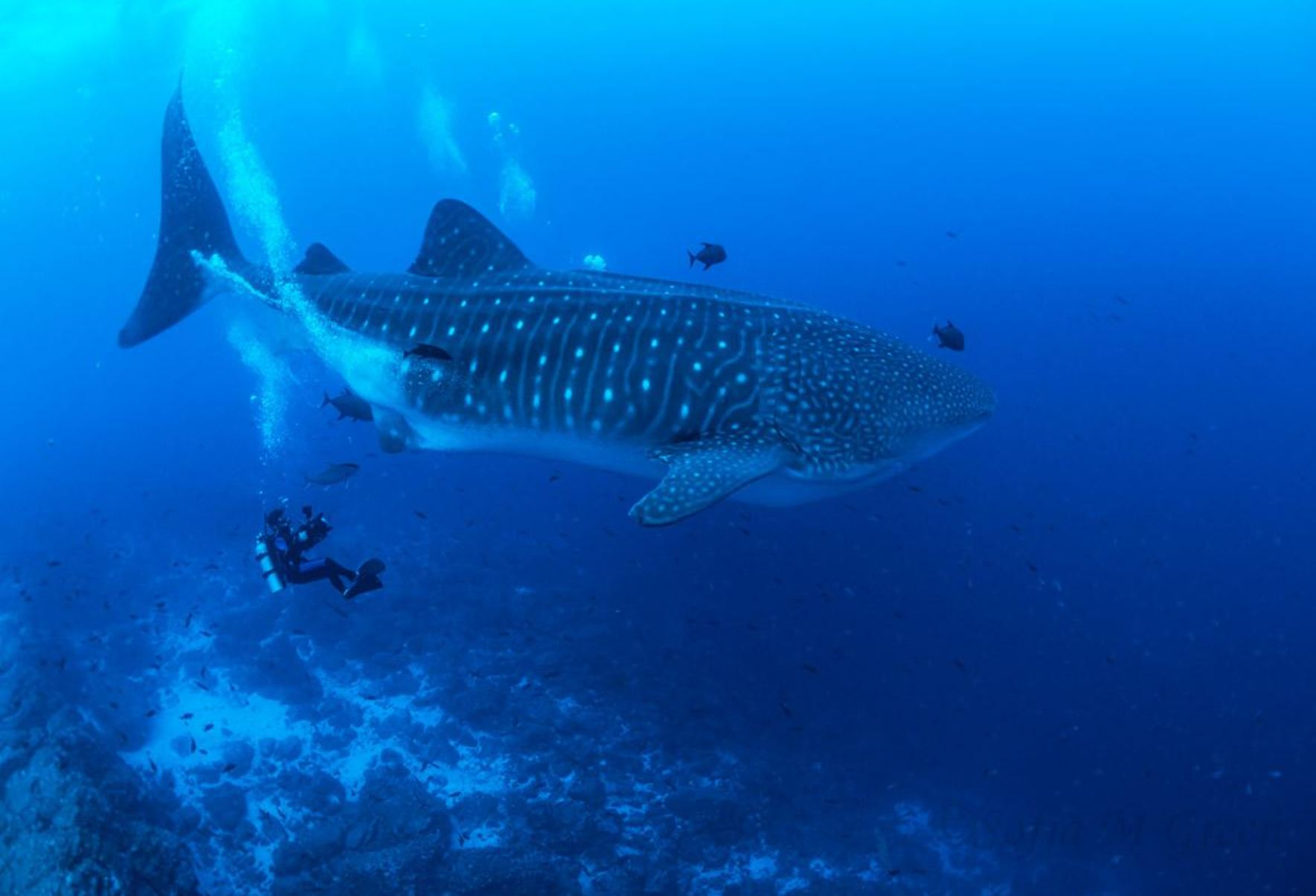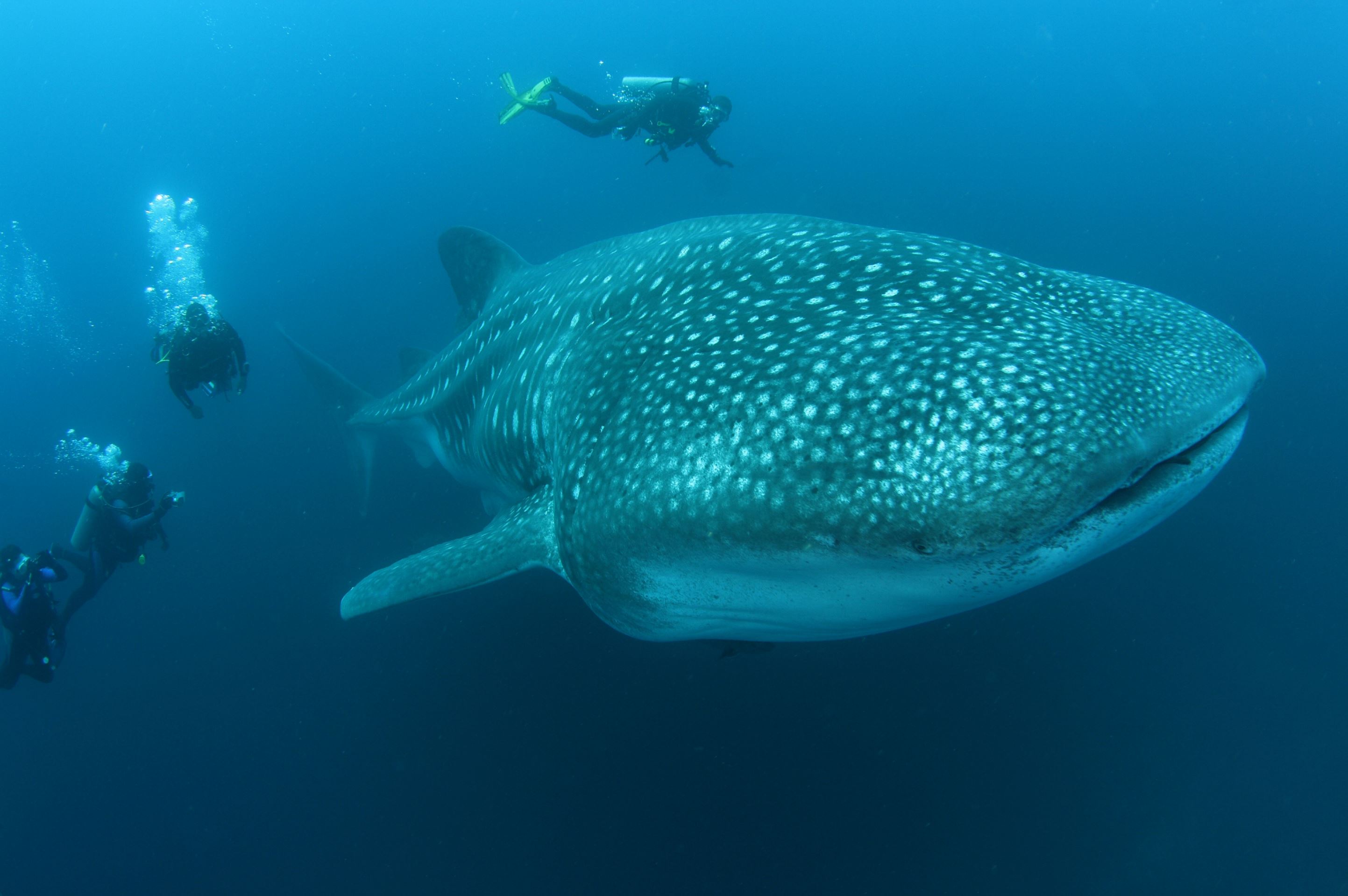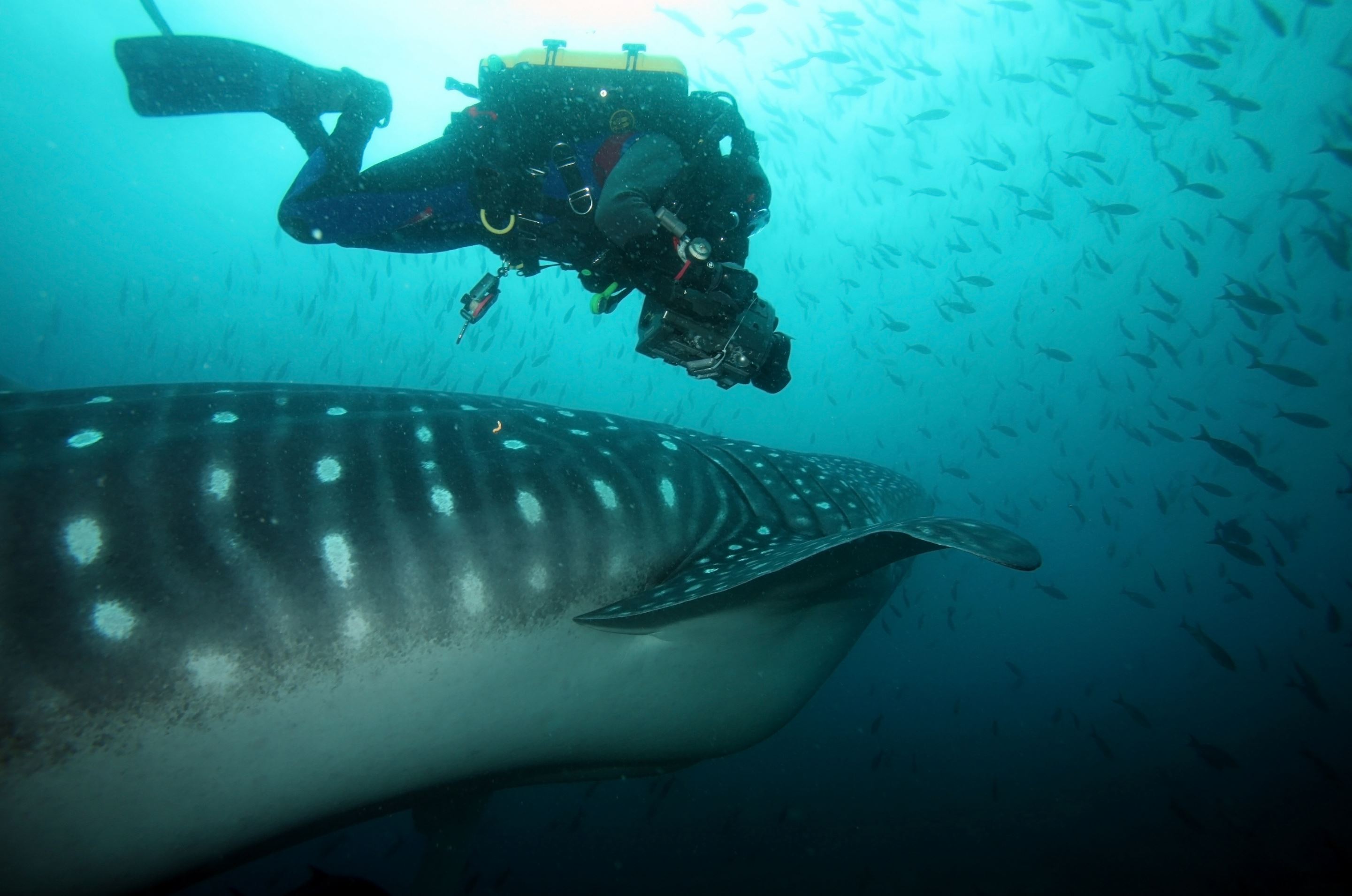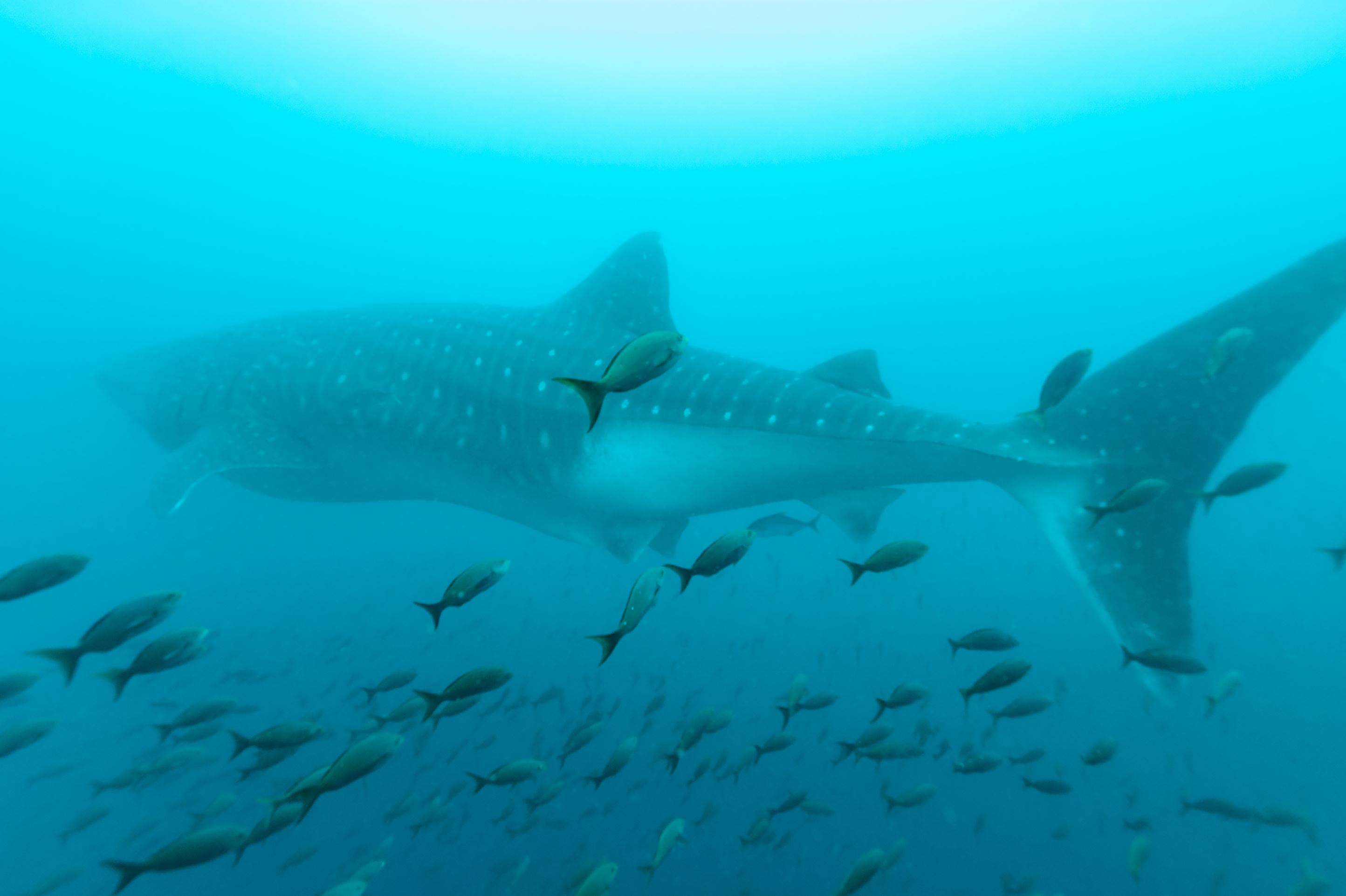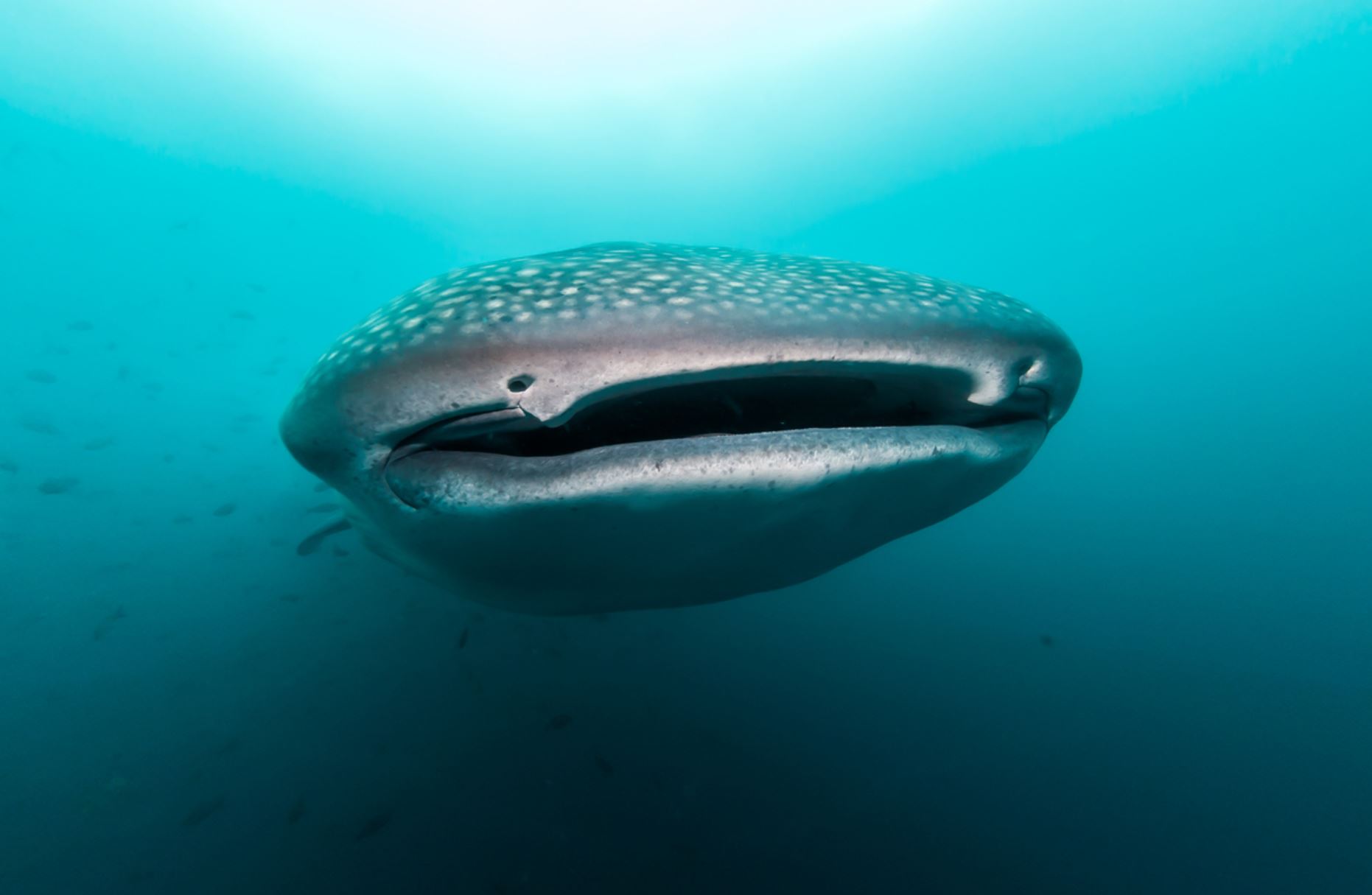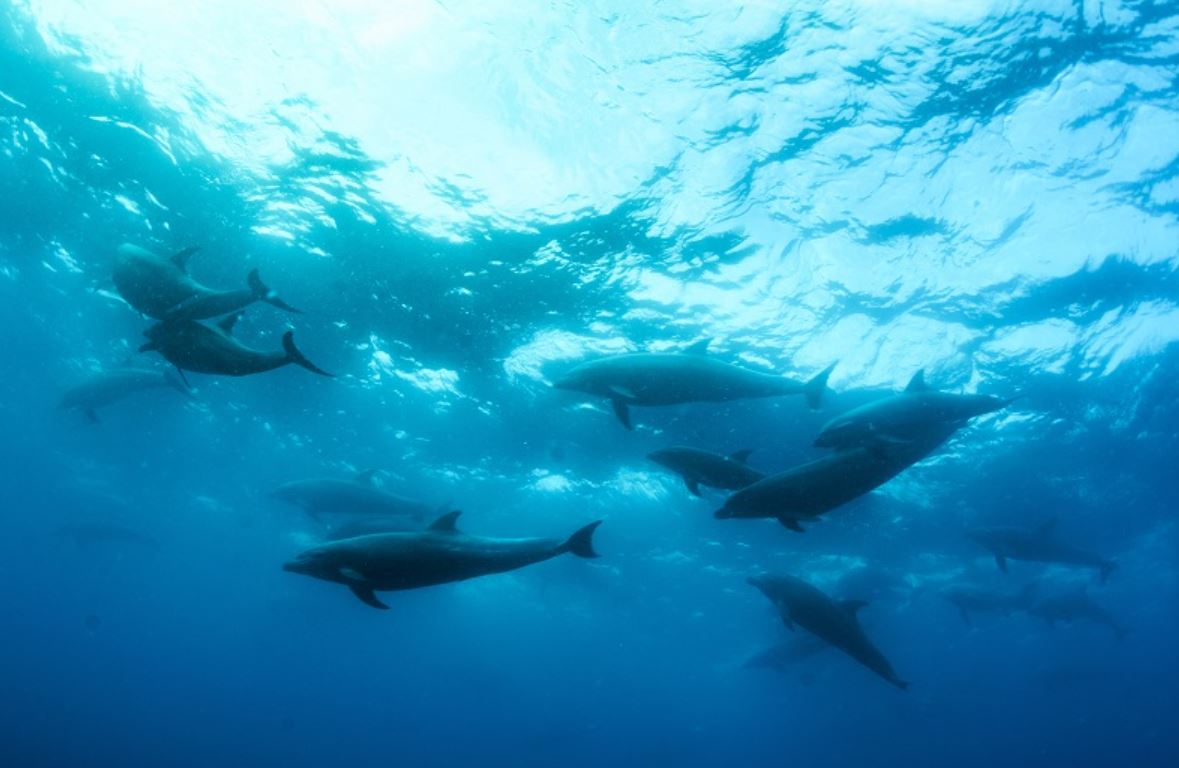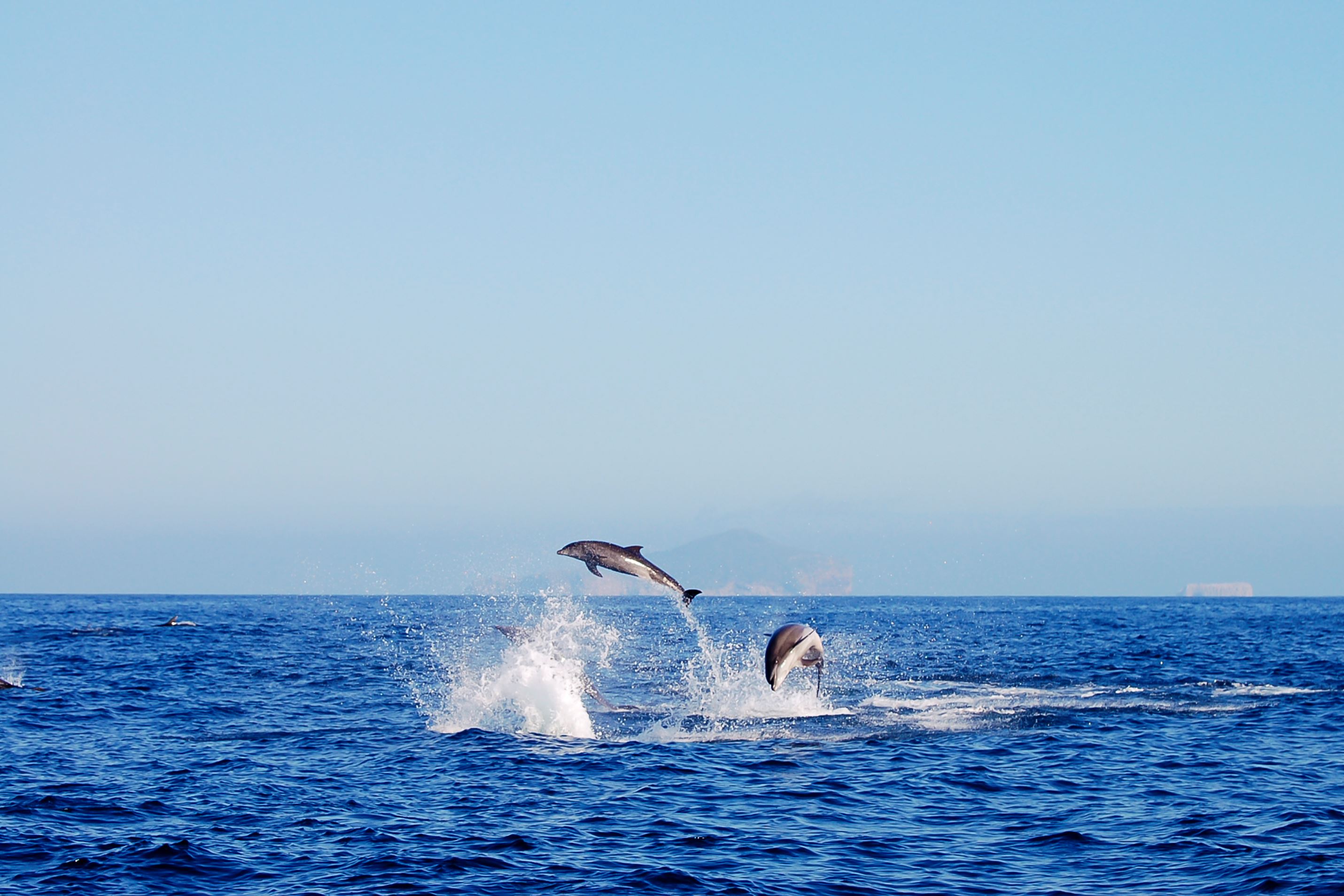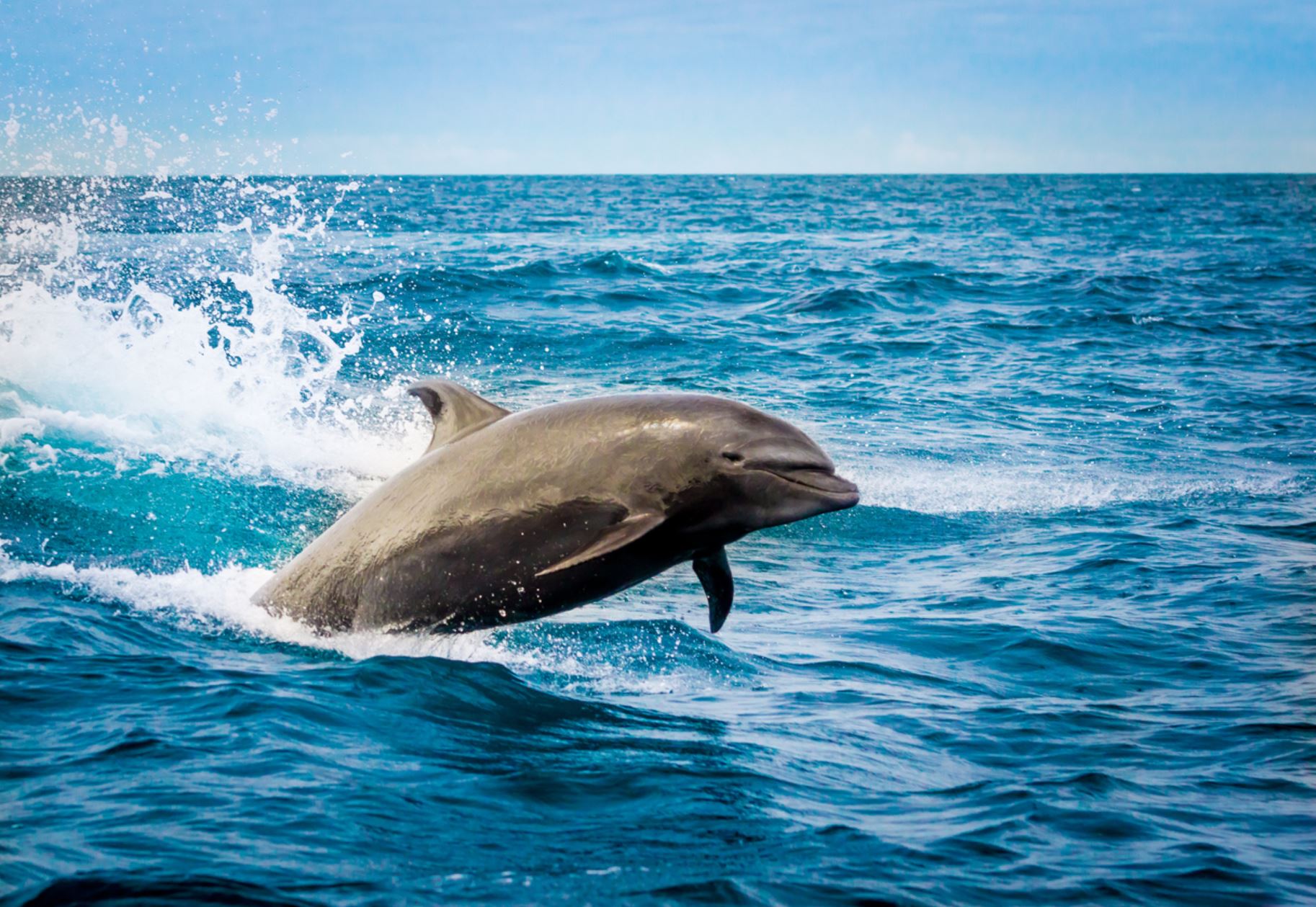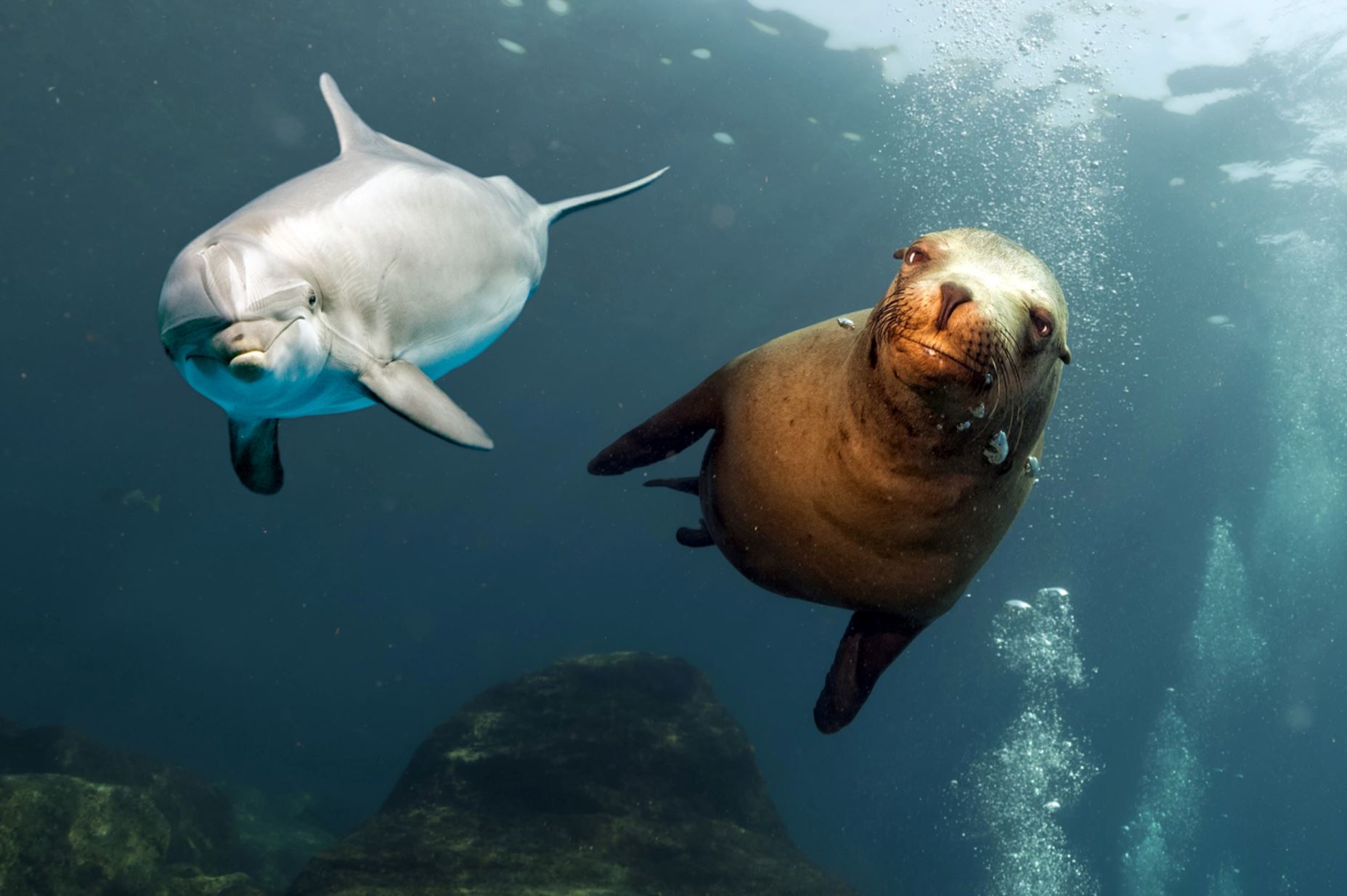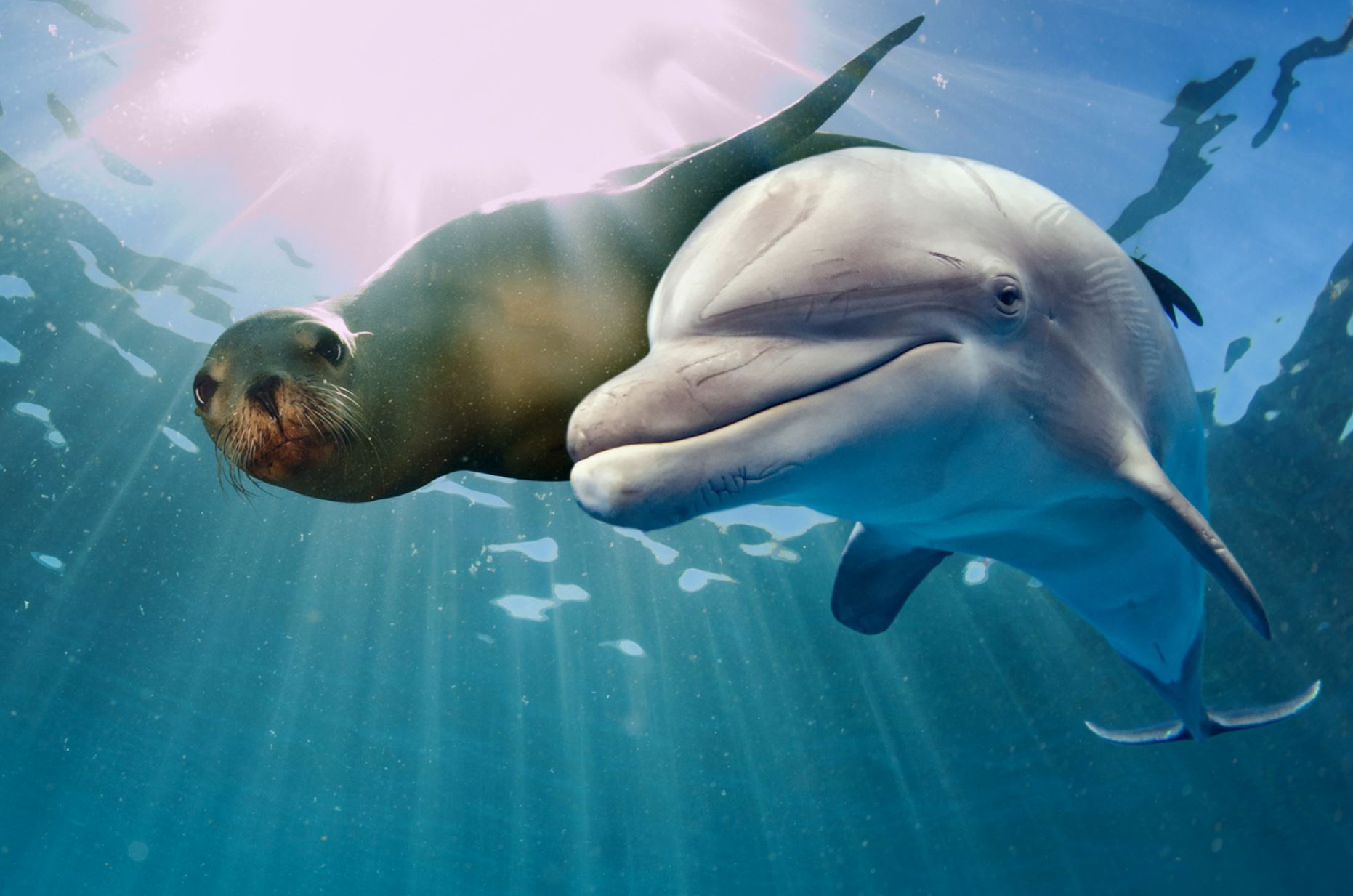Darwin
Animals/Wildlife




Landscape/Views


Snorkeling





Beaches

Isla Darwin (English Culpepper Island) is an uninhabited island that is located in the far northwest of the Galapagos Islands, part of Ecuador, and with an area of just over 1 km² is the northernmost and westernmost island of the archipelago. It was named after Charles Darwin and was created around 700,000 years ago. The closest island is Wolf and is 34 km further south. Many seals, marine iguanas, sea turtles and numerous bird species live on the island, including the vampire finches. The island of Darwin is under extensive protection by the national park administration, entry is strictly forbidden, special permits for scientists or film teams have rarely been granted in recent years. Local fishermen can acquire fishing licenses that are limited in time and quantity, but are only allowed to use fishing rods, not nets and certainly not with long lines.
Places to visit:
Darwin's Arch About 2 km southeast of the island around the cliffs on the rock in front of Darwin's Arch is one of the most interesting diving areas in the world. It is particularly known for the large schools of hammerhead sharks, which often include over 200 animals here, but also other large fish such as manta rays, eagle rays, cow nosed rays, reef sharks, whale sharks can be observed here in large numbers. The very fish-rich waters around the island are inhabited by large dolphin populations, orcas and other whales often pass by.
Pictures
Highlights / Places to Visit
Darwins´s Arch
The world-famous rock formation Darwin's Arch collapsed off the Galapagos Islands in May 2021. The rock is located about a thousand kilometers off the coast of Ecuador, near the small islet Darwin Island and is one of the most popular diving areas for large freshness worldwide. Warning: This diving area is only for experienced divers. There is a strong current!
There are two primary seasons for diving Darwin’s Arch. The months of June–December are typically known to feature a high percentage of whale shark sightings. Larger numbers of schooling hammerheads are observed January–May. There is no better time to dive the Galápagos than whenever you are there!
Whale Sharks: Between June and November, the number of whale sharks observed increases dramatically.
Animals that can be seen on the island
Galapagos Racer Snake
Racer snakes on Galapagos are constrictors and only mildly venomous. They are known to prey on lava lizards, geckos, insects, iguanas, mice, rats and hatchlings of several bird species. They are not at all aggressive towards humans and could not do much harm if they were to attack after being threatened. Racers tend to be dark brown with stripes or spots.
There is some confusion over the number of species of racer snake found in Galapagos due to poor research. The latest research suggests that there are: the Galapagos racer (Pseudalsophis biserialis) from San Cristobal and Floreana – though it is locally extinct on Floreana and now only found on nearby islets; the Espanola racer (Pseudalsophis hoodensis) from Espanola and adjacent islets; Santa Cruz racer (Pseudalsophis dorsalis) from Santa Cruz, Baltra, Santa Fe and adjacent islets; Fernandina racer (Pseudalsophis occidentalis) from Fernandina, Isabela, and Tortuga; banded racer (Pseudalsophis slevini) from Pinzon; and the striped racer (, ) from Baltra and Santa Cruz.
It is the Fernandina racer which has been observed hunting for marine fish from rock pools and the shallows around Fernandina. The British biologist Dr. Godfrey Merlen was the first scientist to ever see this behaviour happening as he noted up to 15 individual snakes slithering around the lava rock pools around Cape Douglas. This is a unique behaviour of terrestrial snake not observed anywhere else in the world. The racers on Fernandina were also the stars of BBC´s Planet Earth II where they were filmed hunting juvenile marine iguanas.
Racer snakes can be found in Galapagos on most of the major islands, though they are now locally extinct on Floreana. The snakes are found throughout the year, but unlike many other Galapagos animals they are shy of humans and will hide away making them reasonably tough to spot without looking for them specifically. They are diurnal, most active around dawn and dusk, and often rest around midday. The native snake population has been decimated by introduced species such as cats, pigs and feral goats which forage for their eggs.
- Animal Group: snakes
- Scientific Name (depending from the islands): Pseudalsophis biserialis, Pseudalsophis hoodensis, Pseudalsophis dorsalis, Pseudalsophis occidentalis, Pseudalsophis slevini, Pseudalsophis steindachneri
- Animal Average Size: 80 cm bis 1,20 m
- Animal Average Weight: 8 – 10 kg
Racer males can be found in Galapagos on most of the major islands!
Galapagos Stingrays
Seen from the side, this animal is perfectly flat, with pectoral fins that extend to the head. The eyes are located at the sides of its head and with breathing cavities near. The diameter on average is from about 30 cm to less than 1 m. Stingrays are close relatives to sharks, with the common factor that both are cartilaginous fish that swim in warm waters of tropical oceans.
They will have one baby per year, and when the baby is born it will have to fend for itself. The females keep the egg and the juvenile in their uterus (ovoviviparous) from 2 to 4 months until the youngster is big enough to be born. No parental care is given to the newborn, it must be ready to feed and protect itself. Cartilaginous fish tend to mature at a slow rate, some studies say that they enter maturity when they are 20 to 30 years old.
Stingrays can spend most of their time buried on the seafloor and they have electrical receptors in their skin to help them read electrical charges in the ocean when looking for food and for orientation. Their favorite food is worms, fish, mollusks, crabs, and shrimp that they get by scooping through the ocean sand.
There are also other species in the ray family that can be spotted in the Galapagos: manta rays (the biggest of all, measuring about 4 m across its fins), golden rays, and spotted eagle rays.
- Animal Group: Marin Life
- Scientific Name: Dasyatidae
- Animal Average Size: 30 cm - 2 m
- Animal Average Weight: 7,6 kg
Places where you may see this animal in Galapagos:
Wolf, Darwin, Fernandina, Isabela, Genovesa, Santiago, Bartolomé, Rábida, Chinese Hat, Santa Fé, Santa Cruz, North Seymour Plaza Sur, Floreana, Española, San Cristobal
Galapagos Hammerhead shark
The most common of the hammerhead sharks, scalloped hammerheads are a migratory species found in warm temperate and tropical waters of the Atlantic, Indian and Pacific Oceans. They can be told apart from their close relatives by the ‘scalloped’ front edge of their hammer-shaped head (which is called the cephalofoil). The cephalofoil has evolved to improve vision and to provide a larger area for the electroreceptors that the sharks rely upon for hunting prey on or under the sediment.
The body is slender and is a brown-bronze colour on top and white below. The teeth are narrow backwards-facing triangles, perfect for seizing prey that they can eat whole rather than having to take bites out of larger prey. Their diet ranges from schooling fish such as sardines, herrings and mackerel, to stingrays, squid and even crustaceans.
As with all hammerhead species, they have viviparous reproduction meaning that pups are nourished by a placental link to the mother much like mammals, and are born alive and fully functional. The gestation period lasts between 9-12 months and litter sizes can be large, ranging from 12-40 pups. Pups are born in shallow coastal areas and measure just 30-55 centimetres. Predation on pups by other sharks is high.
The Galapagos Marine Reserve (GMR) is one of the few places on Earth where scalloped hammerhead sharks can be seen gathering together in large schools of up to several hundred. The exact reason behind this schooling behaviour remains a mystery. In 2017, it was also found that scalloped hammerheads have nursery sites in the GMR. The average lifespan of a Galapagos Hammerhead shark is between 20 – 30 years.
Around the northern islands of Darwin and Wolf and occasionally around Kicker Rock you can see Hammerhead sharks with a bit luck. Hammerhead sharks are in the Galapagos Marine Reserve all year round but their abundance is highest in January and lowest in May. Mating and pupping seasons in Galapagos are currently unknown.
The scalloped hammerhead is an increasingly targeted species by commercial and illegal fisheries for their fins as these are highly valued in the Asian market for shark fin soup. They are very vulnerable to being caught as bycatch by trawls, purse-seine nets, gillnets and longlines. A large number of pups are also caught through artisanal coastal fisheries.
Scalloped hammerhead sharks are listed on Appendix II of CITES meaning that all international trade of this species must be registered. Within the Galapagos Marine Reserve, scalloped hammerheads are protected by law and, in 2007, Ecuador issued two new decrees which established better controls.
Animal Group: Marine Life
Scientific Name: Sphyrna mokarran
Animal Average Size: 2,5 – 4,2 m
Animal Average Weight: 80 - 100 kg, max. 152 kg
Places where you may see this animal in Galapagos: Darwin, Wolf, San Cristobal (Kicker Rock)
Whale Shark
The whale shark (Rhincodon typus), is a slow filter feeding (animals that feed by straining suspended matter and food particles from water) shark that is the largest living fish species, reaching up to 18 metres in length. Whale sharks are rare throughout Galapagos and mainly found in open water. They are grey-brown in colour fading to paler undersides and have a white spotted pattern.
As a filter feeder, it has a spacious mouth which can be up to 1.5 metres (4.9 feet) wide and can contain between 300 – 350 rows of tiny teeth. It has five large pairs of gills. Two small eyes are located towards the front of the sharks wide, flat head.
The Whale sharks skin can be up to 10 centimetres (3.9 inches) thick. The shark has a pair each of dorsal fins and pectoral fins. A juvenile whale sharks tail has a larger upper fin than lower fin while the adult tail becomes semi-lunate (or crescent-shaped). The whale sharks spiracles (mall openings on the surface of some animals that usually lead to respiratory systems) are just behind the eyes.
The whale shark is not an efficient swimmer since the entire body is used for swimming, which is unusual for fish and contributes to an average speed of only around 5 kilometres per hour (3.1 miles per hour).
The whale shark is believed to have originated about 60 million years ago. The name ‘whale shark’ comes from the fishes physiology; that is, a shark as large as a whale that shares a similar filter feeder eating mode.
The whale shark inhabits the world’s tropical and warm-temperate oceans. While thought to be primarily pelagic (open sea or ocean that is not near the coast), seasonal feeding aggregations of the sharks occur at several coastal sites such as Galapagos.
The whale shark is solitary and rarely seen in groups unless feeding at locations with an abundance of food. Males range over longer distances than females (which appear to favour specific locations).
- Animal Group: Marine life
- Scientific Name: Rhincodon typus
- Animal Average Size: 10 - 12 Meter
- Animal Average Weight: 15-30 Tonnen
Places where you may see Whale Sharks in Galapagos: Wolf, Darwin, Fernandina, Isabela, Santiago, Santa Cruz, Genovesa, Marchena, San Cristobal, Floreana, Española
Dolphins
Bottlenose Dolphin
While not native to the Galapagos, the bottlenose dolphin is a frequent visitor to the islands and the most commonly seen cetacean in the Galapagos. They have short beaks and curved dorsal fins, and their backs and sides are dark gray or black, with paler skin underneath. They often travel in large pods and can sometimes be spotted playfully riding the bow waves of ships and yachts. They can appear any time our boat is moving and often put on whimsical shows that delight travelers. Their distance from the boat varies: some will frolic right alongside the vessel, others will dance near the bow, while still others will execute flips off on the horizon. If you spot them at night, the swimming dolphins cause the ocean to shimmer with bioluminescence as they churn up thousands of miniscule phosphorescent organisms that glow when disturbed. An encounter with these highly intelligent cetaceans is one of the highlights of any Galapagos adventure.
Common Dolphin
The common dolphin looks similar to the bottlenose but has a longer beak, gray flank markings, an upright dorsal fin and a dark stripe that runs from the flipper to the chin.
Striped Dolphin
This striking creature is seen less often than bottlenose or common dolphins because it rarely bow rides. It is smaller than the bottlenose and larger than the common dolphin and can be identified by its more rounded dorsal fin and distinctive color pattern consisting of bold, thin stripes.
Animal Group: Marine life
Scientific Name: Tursiops truncatus (Bottenlose Dolphin)
Animal Average Size: 13 feet
Animal Average Weight: 300 kg
Places where you may see Dolphins in Galapagos: Wolf, Darwin, Fernandina, Isabela, Santiago, Santa Cruz, Genovesa, Marchena, San Cristobal, Floreana, Española
Location
Mr. Frobeen can give you precise information about the ships.
Mr. Frobeen will be happy to advise you by phone at +49 (0)7633 9399360 or via email info@frobeen.de
If you want to book, what are the payment methods?
The reservation is gratis as an option.
If you want to make an fixed booking, there is to pay a deposit of 20%.
The remaining payment is due 4 weeks before departure. In individual cases, such as diving cruises, other rules apply. Information on request.
- Your payments are insured against bankruptcy!

